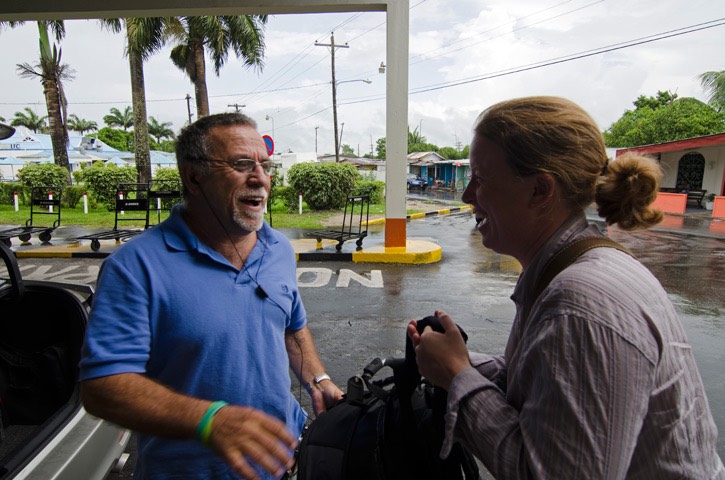Friday, 06/07/2012: Georgetown – Kaieteur Falls
Dennis appeared as cheerful as ever in the lobby of the Cara Lodge with our guide, Luke. The two bantered all the way to the airport in their delightful Caribbean accents: Luke claimed that he would be the one doing all the cooking on our expedition, while Dennis loudly proclaimed his disbelief at this apparently preposterous suggestion. In the event, it turned out that Dennis was right.
This time we were dropped off at a different shed at Ogle, as we were flying with Air Services Limited (www.aslgy.com), who, as part of their scheduled flights, also run regular trips to the gold mining settlements in the interior of the country. The shed cum hangar was very busy with long queues of passengers and jostling people hoping to ship cargo on the little aircraft. We gazed in awe at the different types of cargo being checked in: plastic bags full of fresh, dripping fish, pallets of drinks of all sorts, dried food and oil drums of fuel. Nobody really seemed to know when our flight was actually going to leave, so we tried to make ourselves as comfortable as possible for a long wait. We must have been there for close to two hours, when a very short man in a pilot’s uniform walked past us carrying a big cushion under his arm, leaving us wondering if he might be our pilot.
Lo and behold, shortly afterwards we were called forwards and led out onto the tarmac, where a rather battered looking Britten Norman Islander was waiting for us. These iconic twin-engine light aircraft date from the 1960s. There were only about eight spaces for passengers, so Maren quickly grabbed a window seat while Mick managed to get into the co-pilot’s seat! As the pilot went through his pre-flight check, a voice rose from behind us, “Captain, your plane is leaking!” – it turned out that water was dripping down onto a passenger. The little leak was attributed to the ventilation system and not deemed worthy of any further investigation, leaving the passengers laughing nervously. The pilot, even perched on his big cushion, still barely managed to view the outside world over the top of the archaic looking instrument panel. It felt like quite a relief when at last we were airborne over Georgetown.
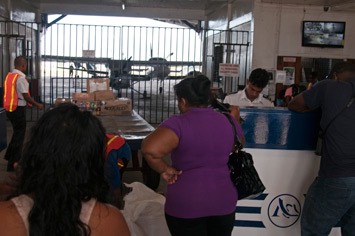
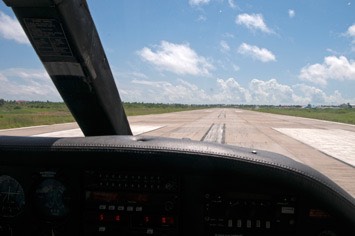
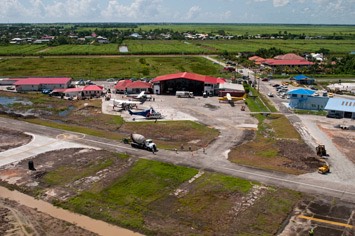
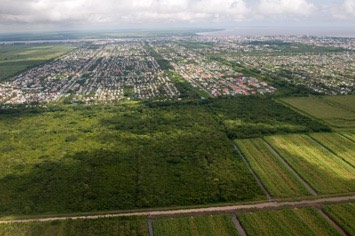
It was striking how quickly we left all signs of civilisation behind us. For around an hour we flew over dense, pristine rainforest, interrupted only occasionally by some large river systems and the single main highway through the country.
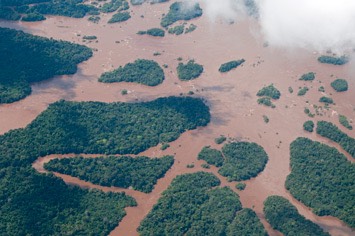
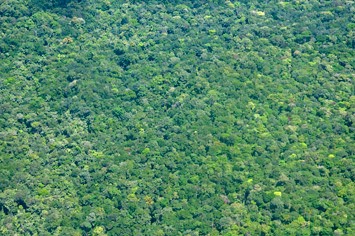
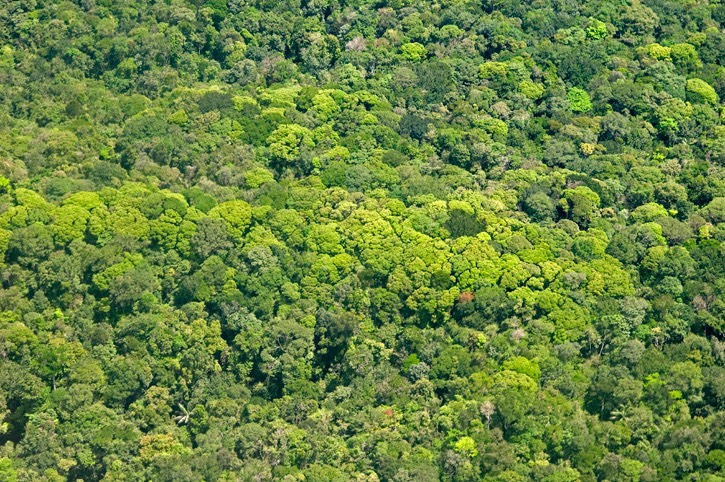
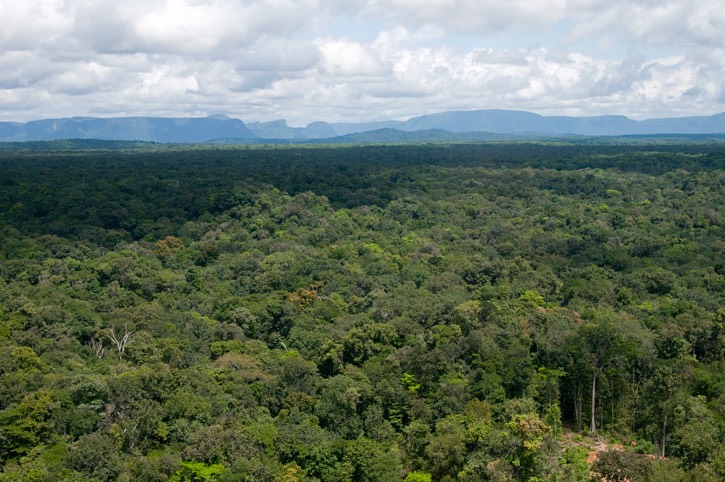
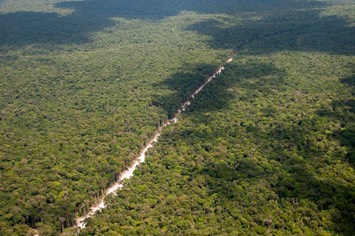
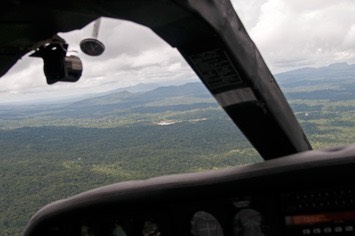
At one point the pilot banked the plane to give us a good view of a bridge spanning a river. It seemed to be of some significance, but quite what that may have been got lost over the din of the noisy engines. Soon after, the impact of gold mining in the otherwise pristine wilderness became visible; trees had been cleared to leave bare, muddy patches. These degraded areas stood out in stark contrast from the lush green forest all around.
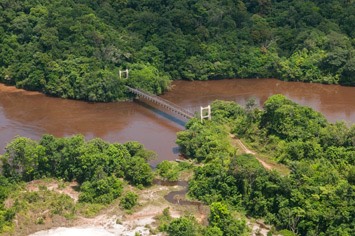
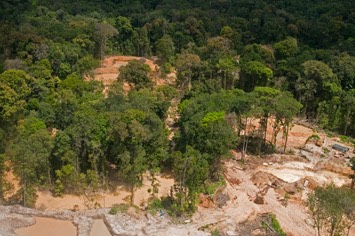
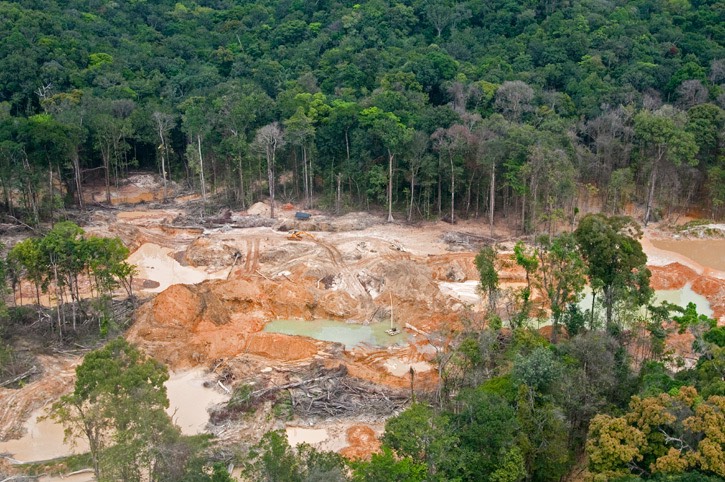
We had a brief stopover in the small and colourful mining town of Mahdia, where we dropped off nearly all the other passengers.
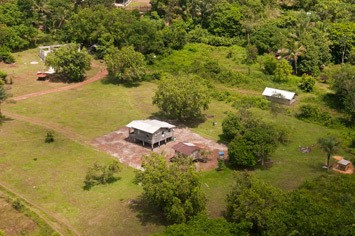
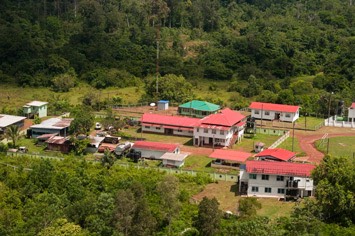
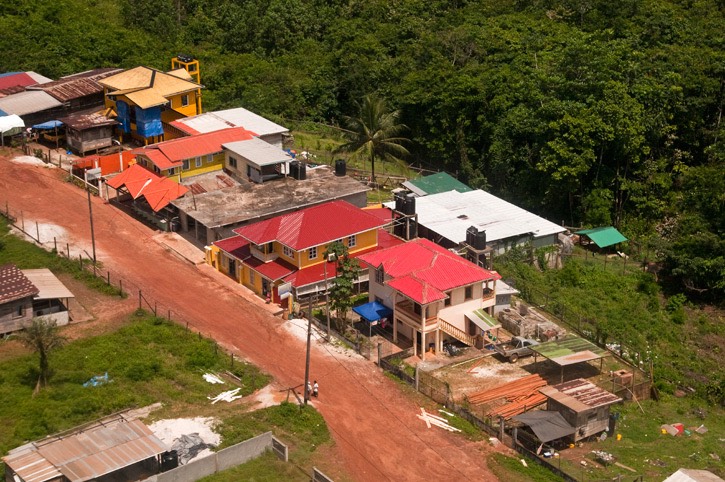
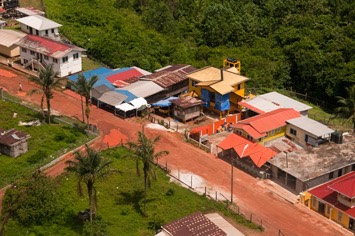
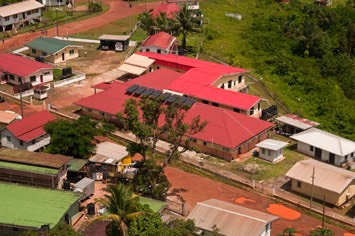
While standing around chatting as the aeroplane was refuelled, we discovered that some of the other passengers had been at Iwokrama at the same time as ourselves! They belonged to the large and rather noisy group of telecommunication workers.
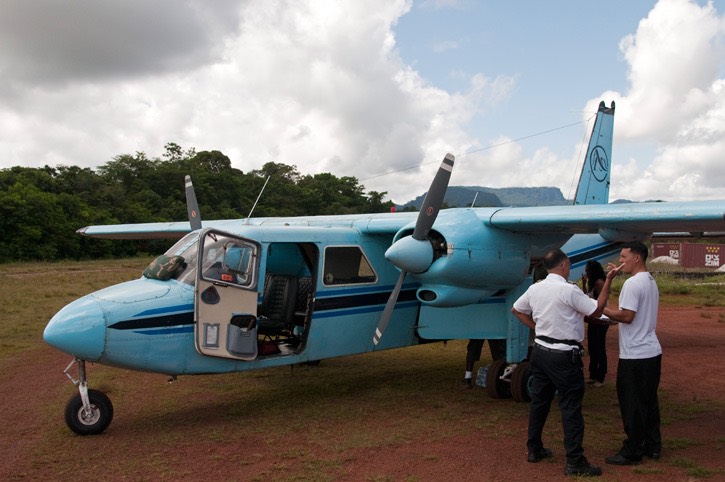
When the plane was ready, we boarded and took off again. Soon after leaving Mahdia behind, we had spectacular views of sheer cliffs and a densely forested mountain range.
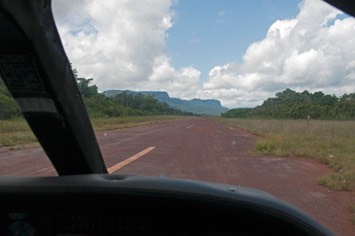
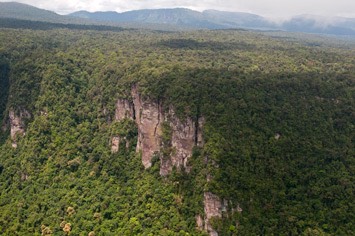
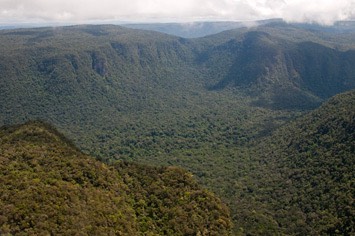
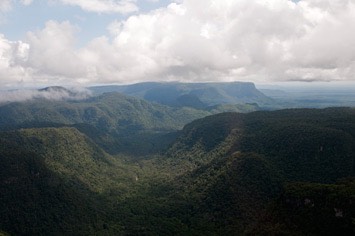
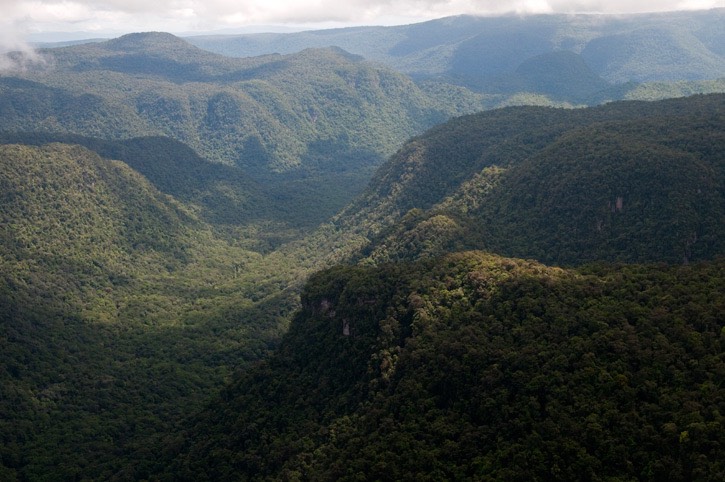
Some twenty minutes later, after passing some smaller waterfalls cascading down the cliffs, excitement mounted as we caught sight of the mighty Kaieteur Falls! We had a great fly-by with the Falls on the port side and then the pilot was kind enough to make another loop, so those on the starboard side also got a good view. It turned out that our visit was well timed, as the Potaro River was full of water after recent rains and Kaieteur was roaring in majestic splendour. Our first views from the air were certainly most impressive!
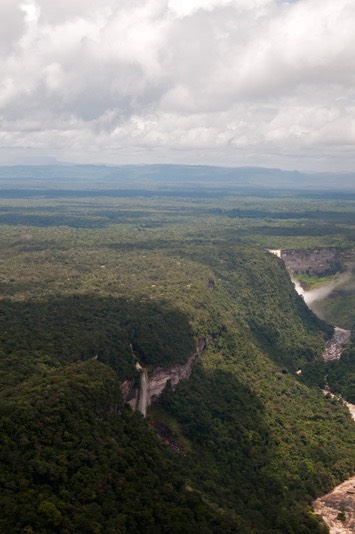
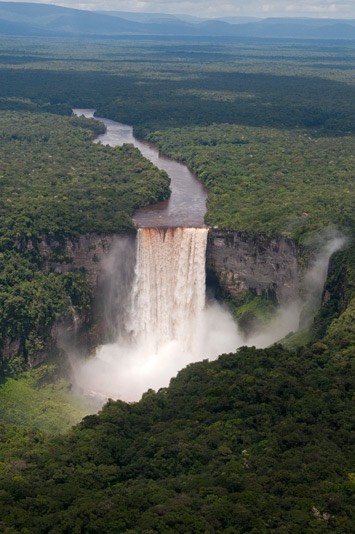
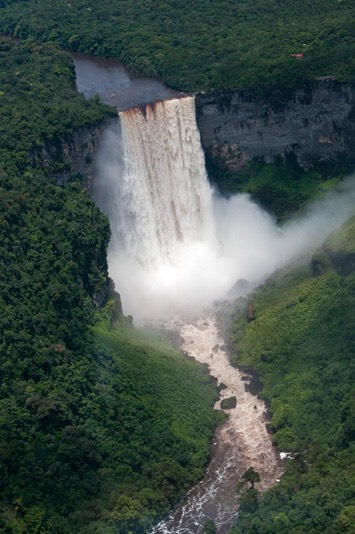
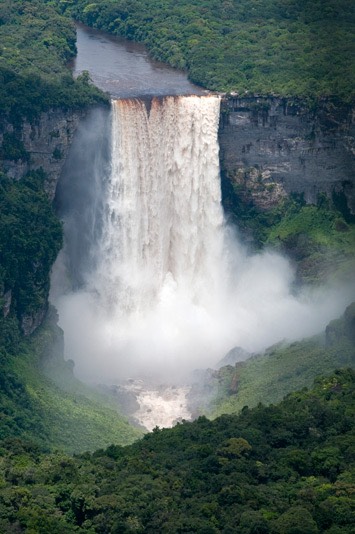
Coming in to land we flew right over the drop of the waterfall and then turned towards the landing strip of the National Park, only a short distance from the edge of the cliff from which clouds of mist rise up from the waterfall.
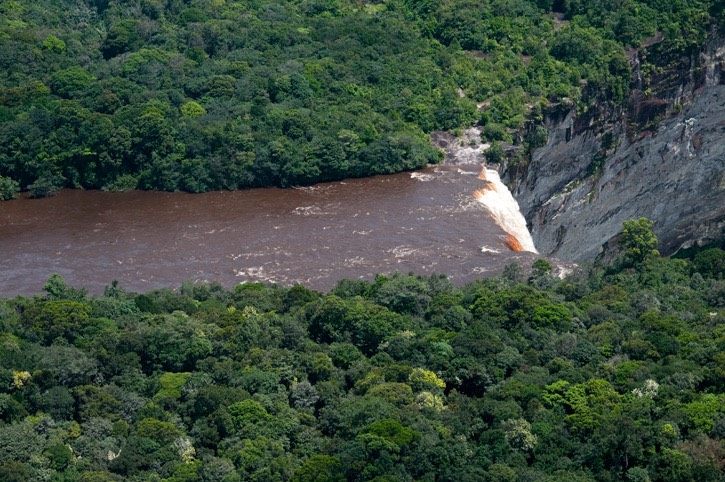
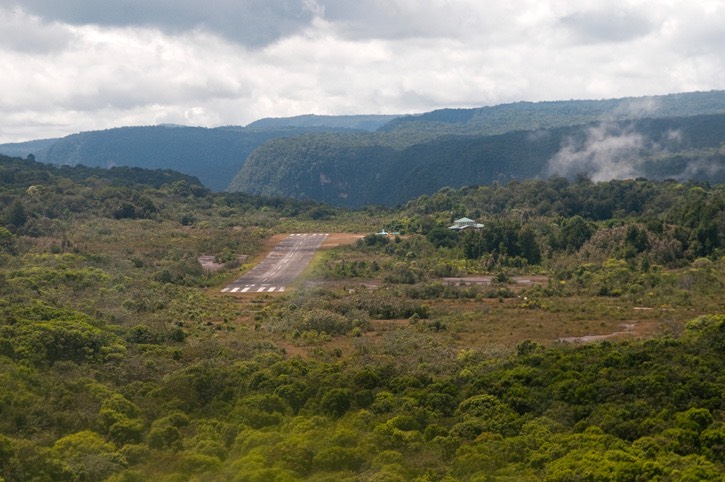
Europeans first saw Kaieteur Falls in the late 1800s. The river that forms the Falls is the Potaro, a tributary of the mighty Essequibo. The surrounding area has been a National Park since 1929: Guyana’s first National Park (www.kaieteurpark.gov.gy). It is also famous for its giant tank bromeliads, golden frogs and Guianan cock-of-the-rocks. We were welcomed at the little National Park visitor centre and led down a narrow path to the guesthouse, where we would spend the next couple of nights. The house was an elderly wooden building with a wide veranda in which hammocks were slung.
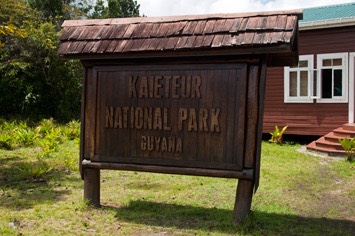
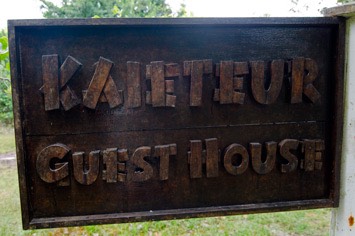
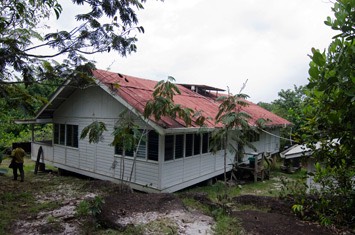
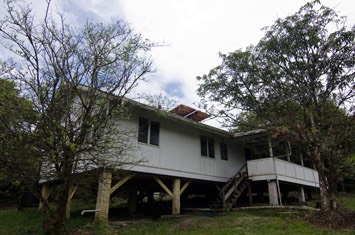
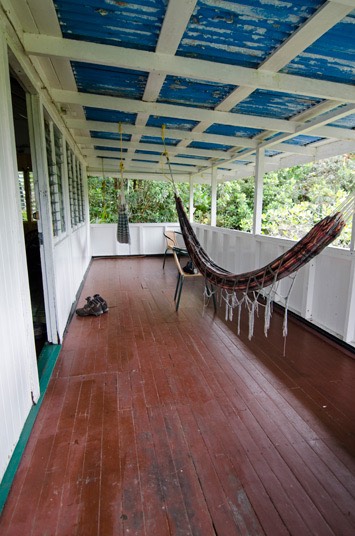
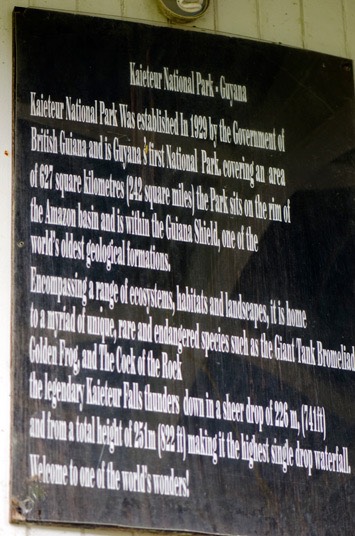
Inside we found a spacious living/dining area, a kitchen, two bedrooms and two bathrooms and we immediately claimed the large, en-suite corner bedroom. It turned out that our cook would be a ranger from the National Park. Bob was a happy, instantly-likeable man. He turned out to be a very good cook, but, as he also guided tour groups to the Falls, our mealtimes had to be arranged around his other work commitments.
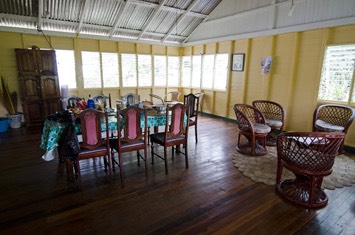
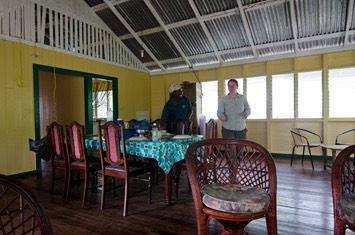
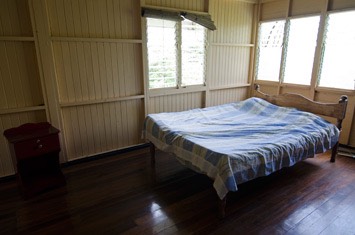
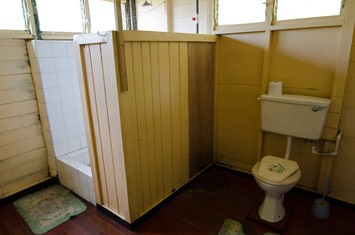
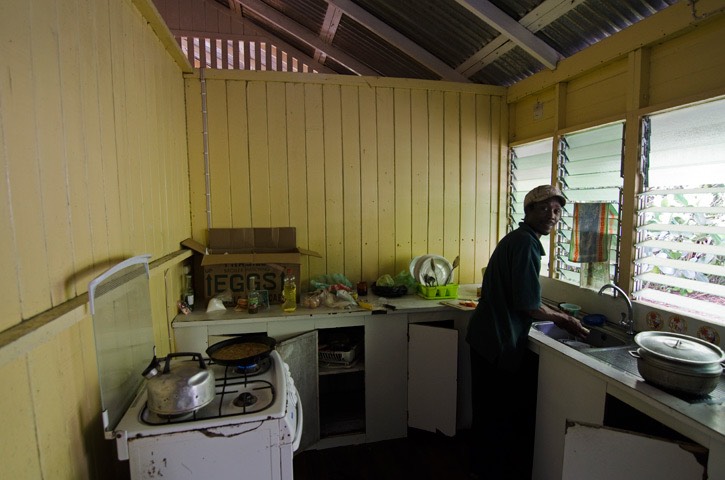
We could hear Kaieteur Falls from the guesthouse, so we were keen to go and have a closer look. After dropping off our bags and supplies, we set off on the short walk to the top of the cascade. A few minutes later we arrived at the top of the cliff, with a fantastic view down the gorge and across to the cliffs on the other side. Legend has it that Kai, the chief of a local tribe, had steered his canoe over the edge of the waterfall in an act of self-sacrifice to protect his tribe from a raiding party from a rival tribe. If you look closely it is said, you can see his face in the cliffs on the other side, overlooking the land of his tribe. “Teur” in the local language means falls, and so the meaning of the name is Kai’s Falls.
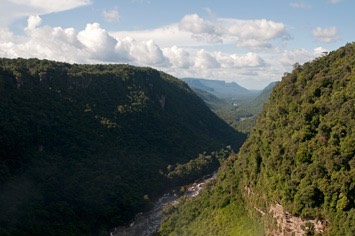
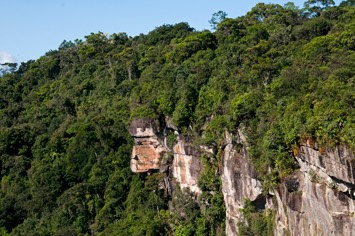
One refreshing aspect of a visit to Kaieteur in these days of obsessive health and safety regulation, is that there are no fences or barriers and one may wander around at will. The only concessions to safety are signboards warning visitors not to venture too close to the edge. Naturally, this is a rule broken by pretty much every visitor…
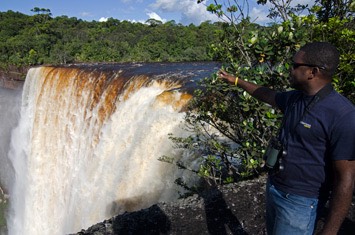
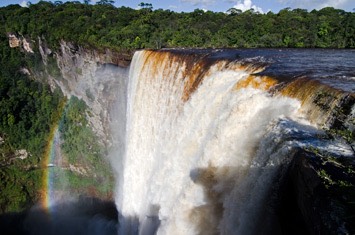
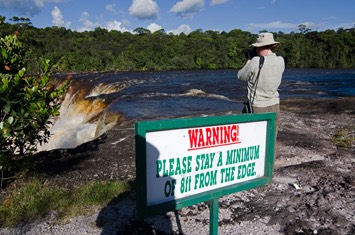
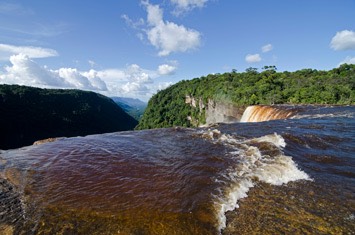
We got some amazing views from the top of the falls, right where the 100 metre wide river falls 226 metres in one single drop, and then a further 25 metres to the bottom of the gorge. This makes Kaieteur Falls the largest single drop waterfall in the world, especially when combined with the volume of water that falls down it, which apparently reaches some 660 cubic metres per second! Standing right there next to it, it’s not difficult to believe these statistics; the volume of water surging past and the incessant roar as it plunges into the gorge is truly breathtaking.
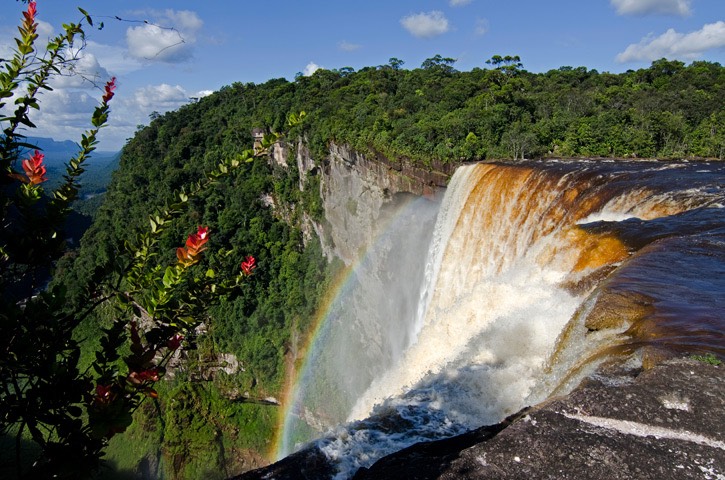
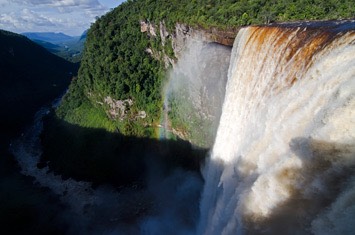
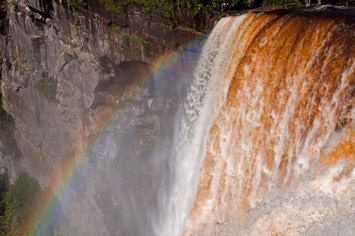
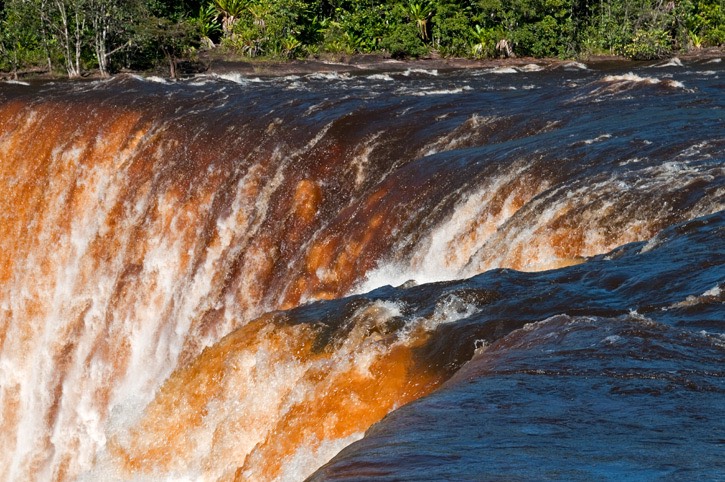
It was a beautiful sunny day for our first impression of Kaieteur and Luke made sure that we posed for the classic photo on the tiny ledge overhanging the waterfall.
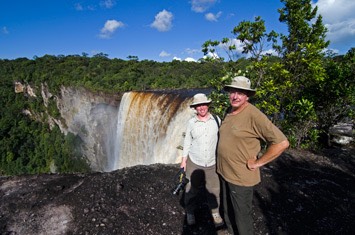
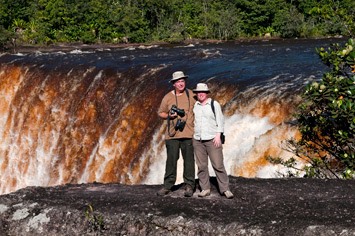
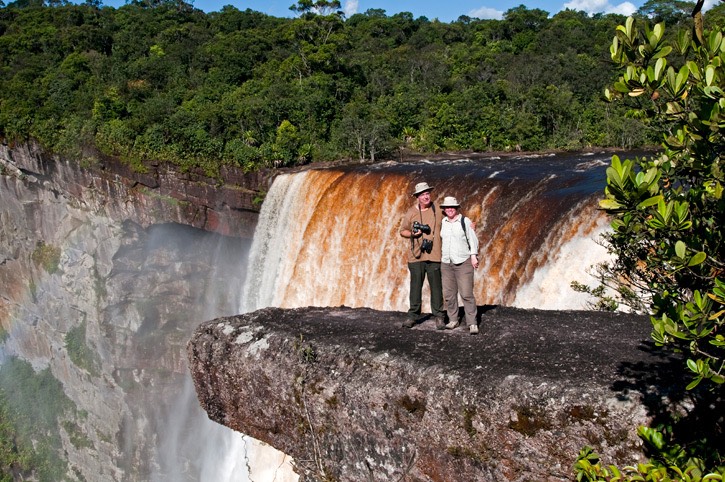
The best view is undoubtedly to be had by lying on your belly and peering over the edge of the overhang. Mick was brave enough to give it a go and Maren followed somewhat more hesitantly.
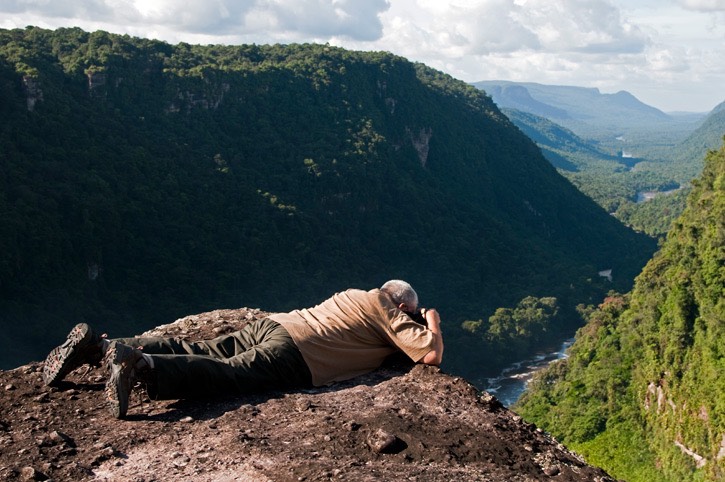
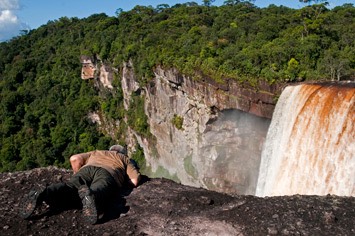
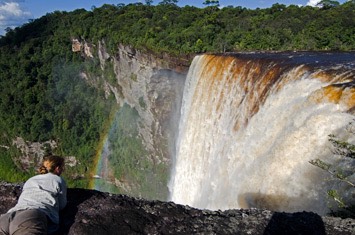
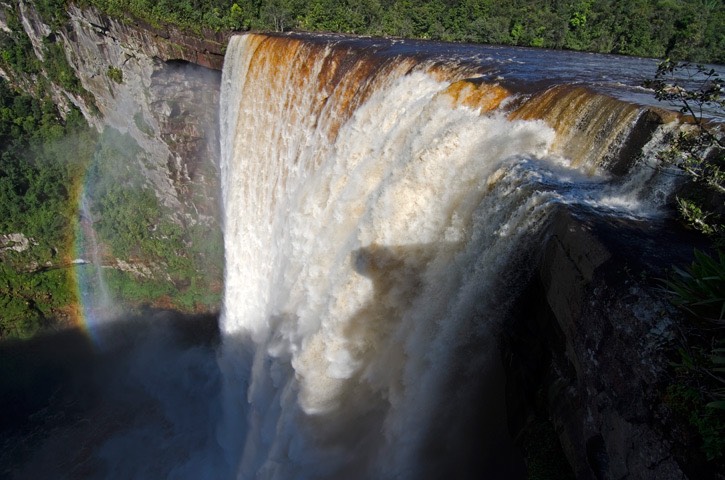
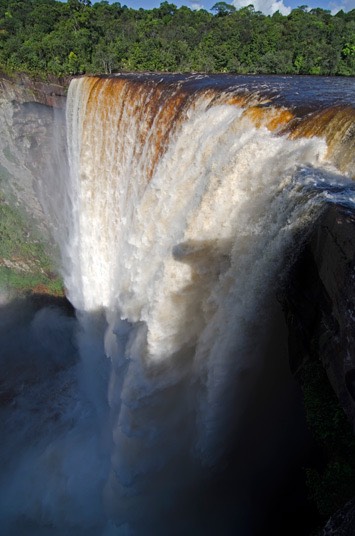
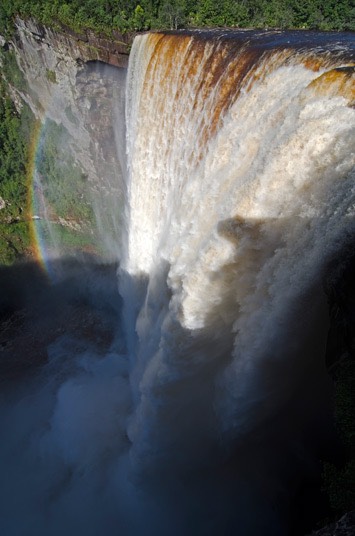
As if the spectacle of the waterfall itself were not enough, tens, if not hundreds of thousands, of swifts roost behind the waterfall at night, safe from predation. We sat on the cliff-top in the evening watching birds circling in large flocks high above us. Apparently several species of swifts are often seen in these flocks: we identified white-chinned (Cypseloides cryptus) and white-collared swifts (Streptoprogne zonaris). It was astonishing to see thousands of swifts dropping like a salvo of arrows out of the sky and whistling right past us to disappear behind the curtain of cascading water! It all happened so incredibly quickly that we wondered how on earth so many birds manage this without crashing into each other.
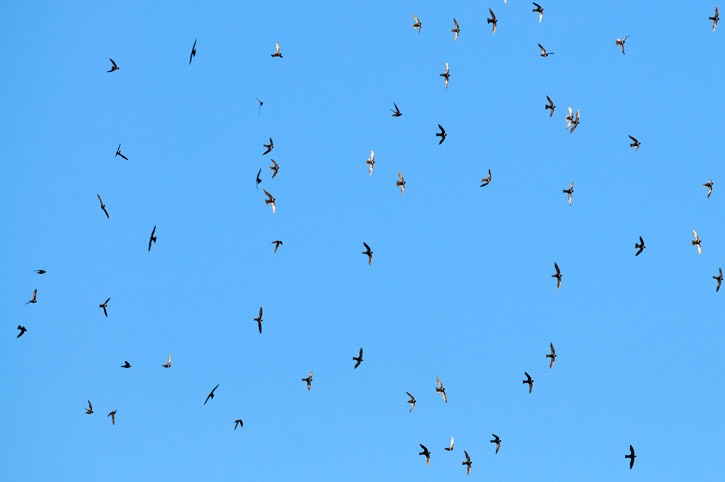
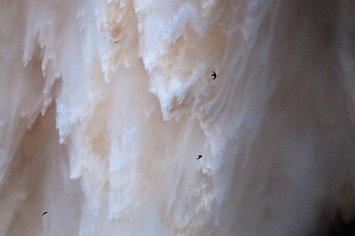
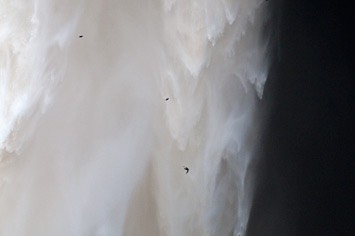
Saturday, 07/07/2012: Kaieteur Falls
We awoke well before dawn to arrive at the waterfall at first light. The gorge was filled with clouds that slowly dispersed, creating a very dramatic and rather mysterious atmosphere.
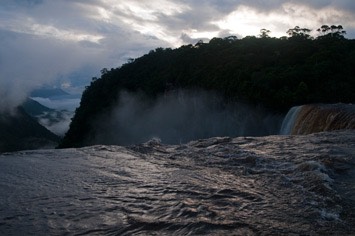
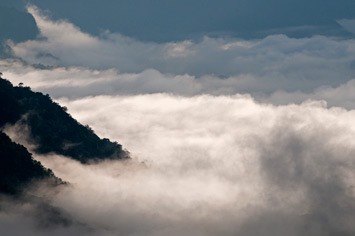
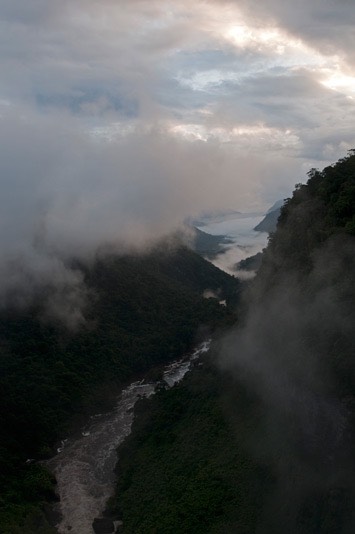
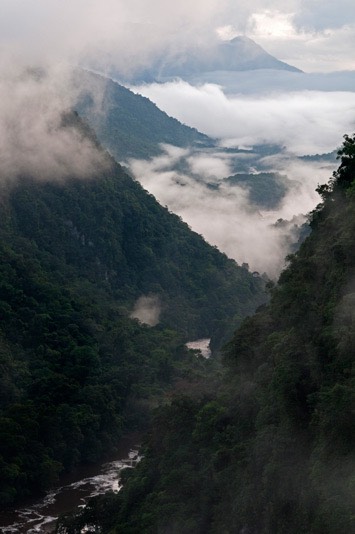
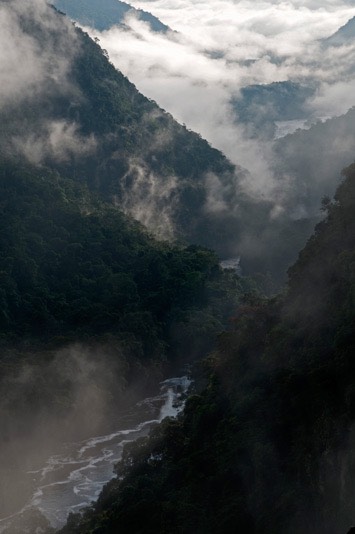
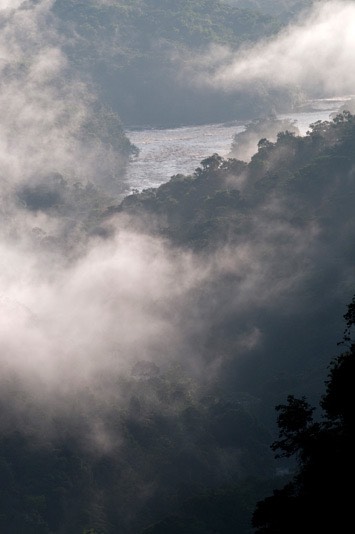
As the light grew stronger, the water tumbling over the edge took on a tannin-rich brownish colour.
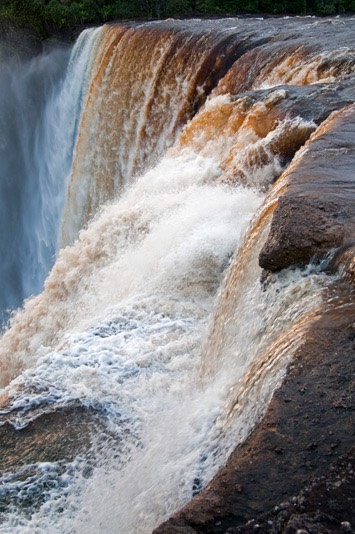
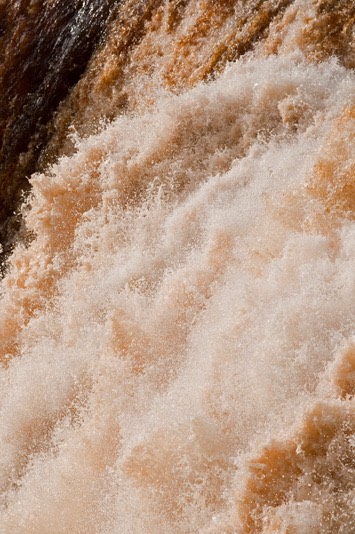
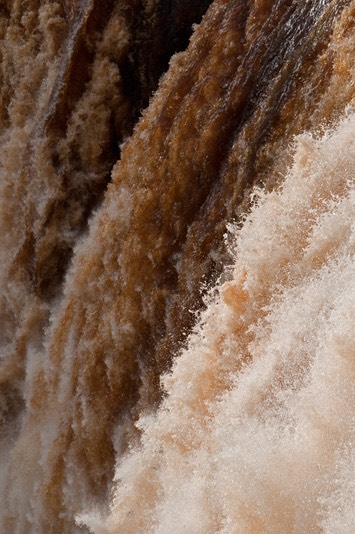
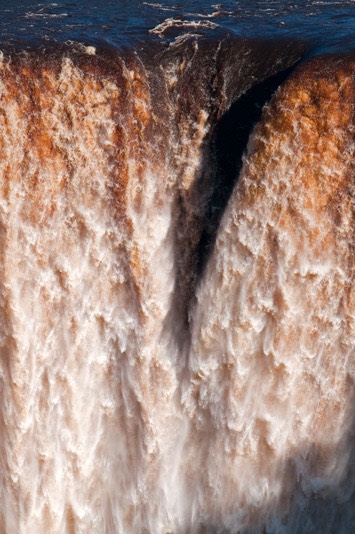
Meanwhile, swifts were pouring out of their roosts behind the waterfall. Although not as spectacular as the evening bombardment, it was amazing to see such large flocks gathering in the sky above us, apparently appearing out of nowhere. The ledges behind the waterfall must be incredibly busy at night!
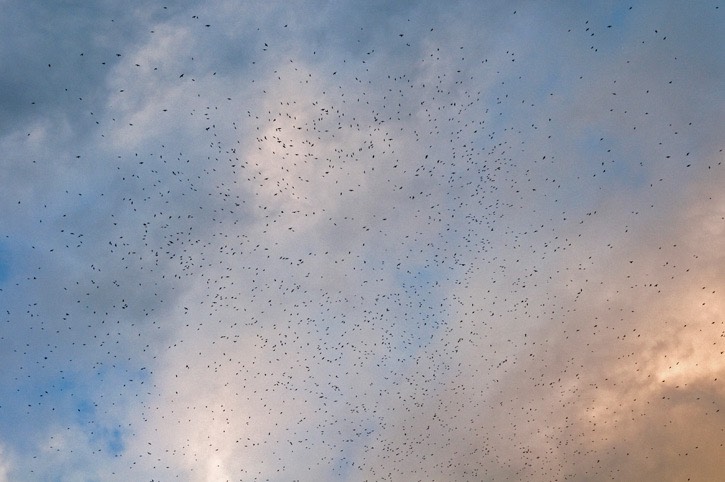
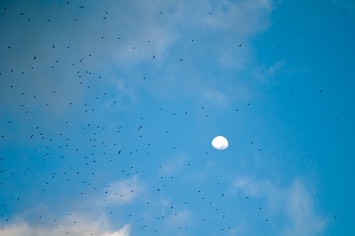
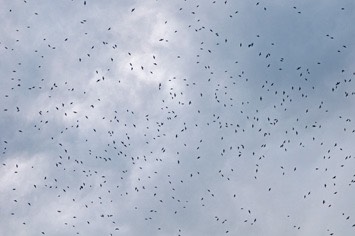
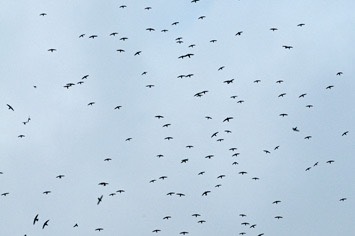
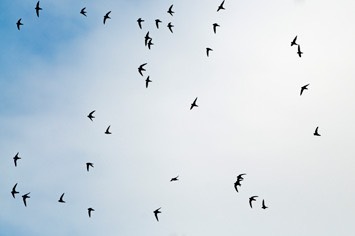
And with so many birds in one place, the predators were not far away. We watched an orange-breasted falcon (Falco deiroleucus) take to the sky and hunt swifts for breakfast.
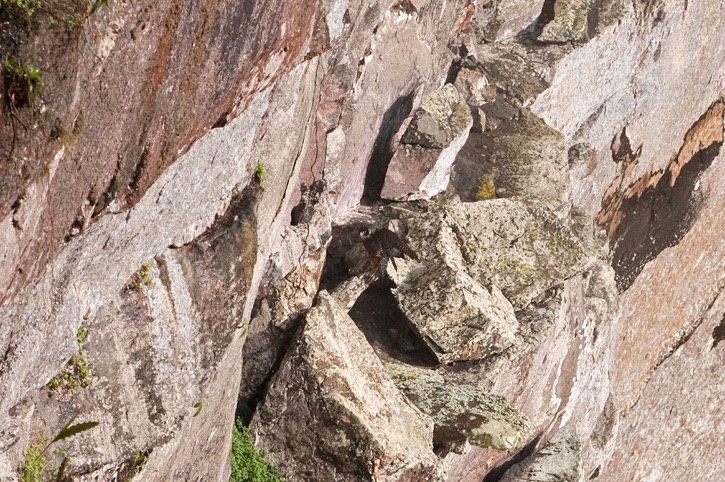
As the swifts started dispersing, we headed back for breakfast. The immediate surroundings of the guesthouse teemed with smaller wildlife, including butterflies and colourful lizards, and we spent some time trying to stalk them with our cameras.
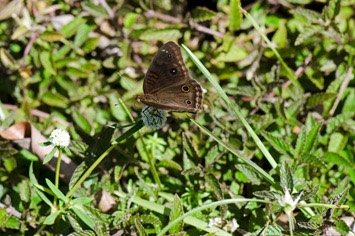
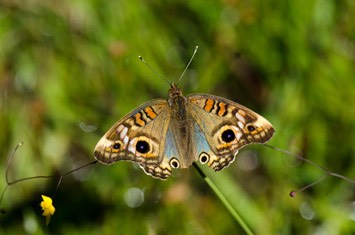

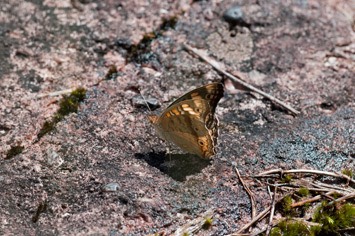
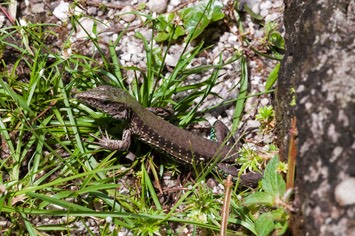
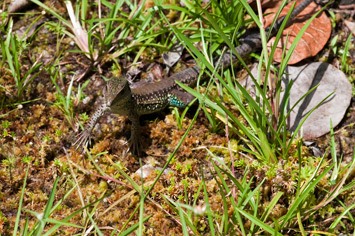
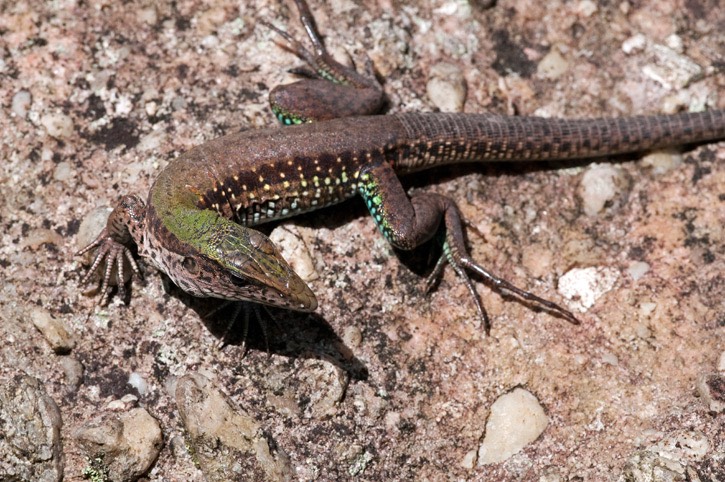
In mid-morning we set off towards Johnson’s View, which was not only Luke’s namesake but also his favourite viewpoint. It is the furthest from the landing strip, so not many of the day trippers make it as far and they hadn’t arrived by that time anyway. All along the way were stunning tropical plants waiting to be discovered and photographed.
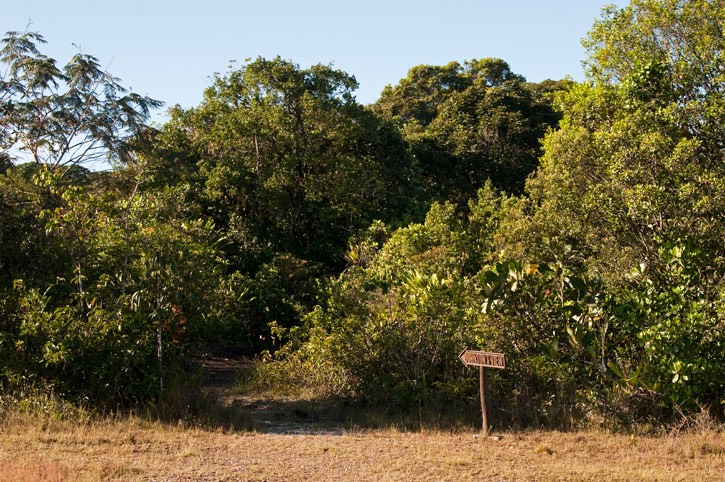
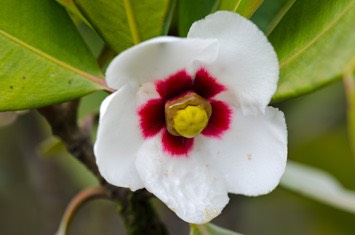
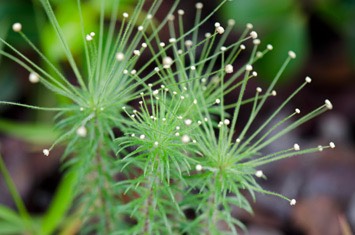
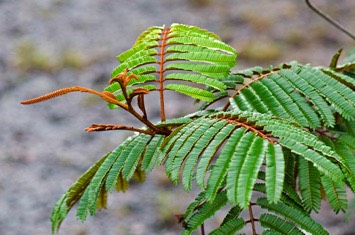
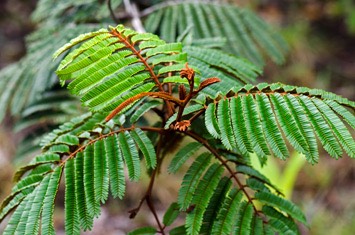
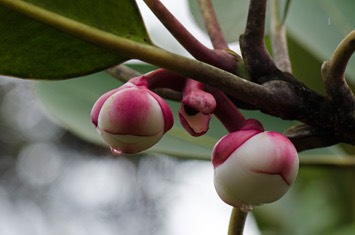
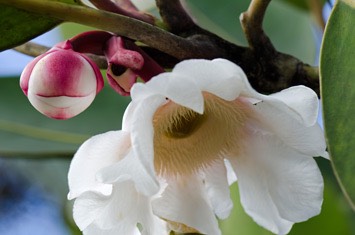
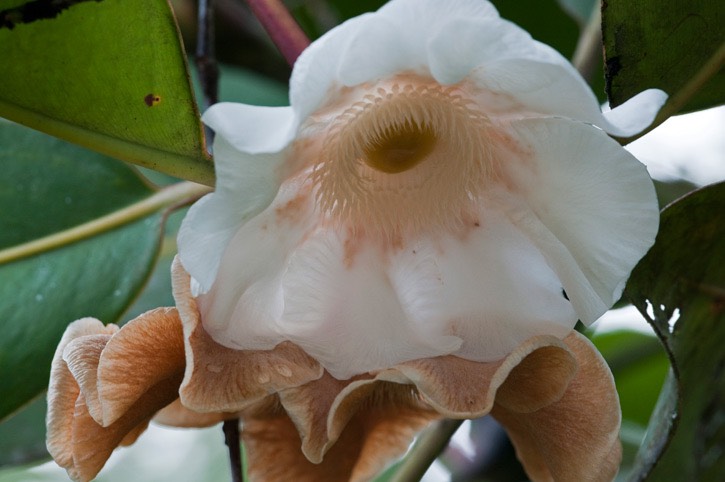
We went through some quite dense forest, which Luke knew to be a good area for the bright orange-coloured Guianan cock-of-the-rock, but we were all surprised when we suddenly spotted a very shaggy-looking figure up a tree. It was a male white-faced saki monkey (Pithecia pithecia), the very species we had tried, but failed, to find in Iwokrama. Unfortunately the strange creature took one look at us and disappeared into the trees like a startled ghost.
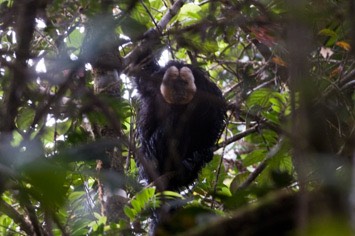
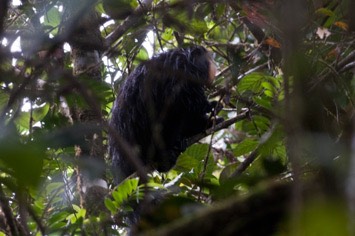
After scrambling up some rocks we finally arrived at Johnson’s View and had to admit that Luke was right – the view is truly stunning. From that tiny ledge it’s possible to take in the entire waterfall, the Potaro River feeding it, the gorge into which the river plunges and the distant Pakaraima Mountains.
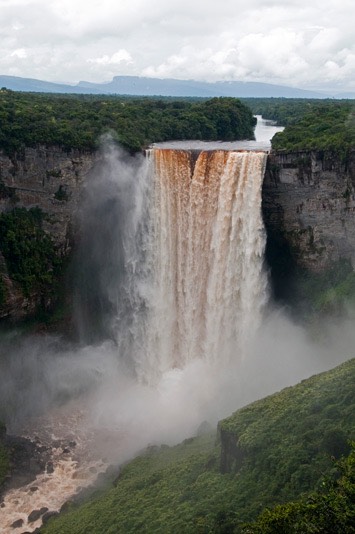
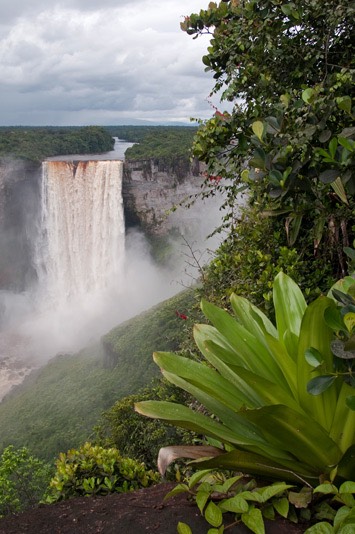
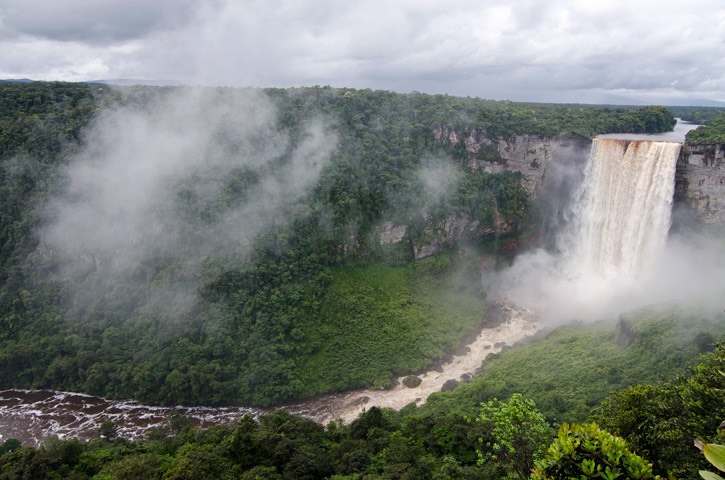
Most of the other viewpoints allow you to look at the waterfall more or less from the side, but here it is possible to get an awesome, frontal view.
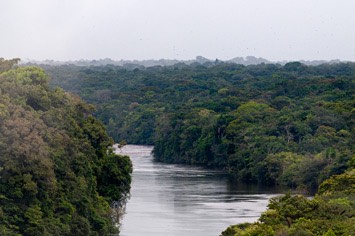
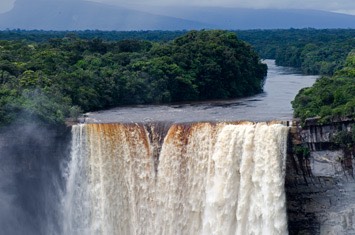
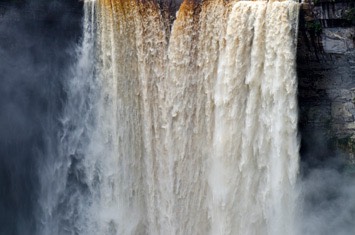
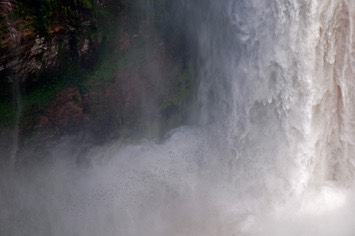
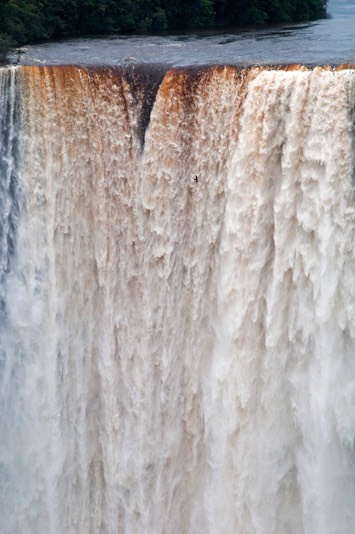
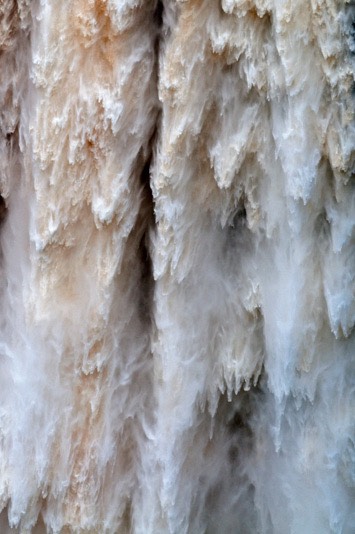
Whizzing around above and in front of the waterfall were still countless numbers of swifts.
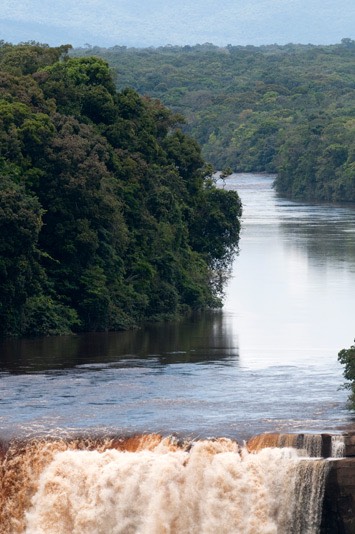
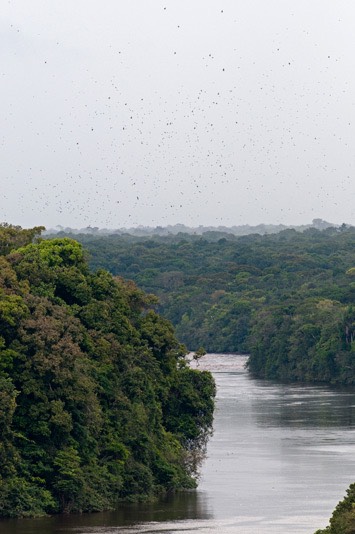
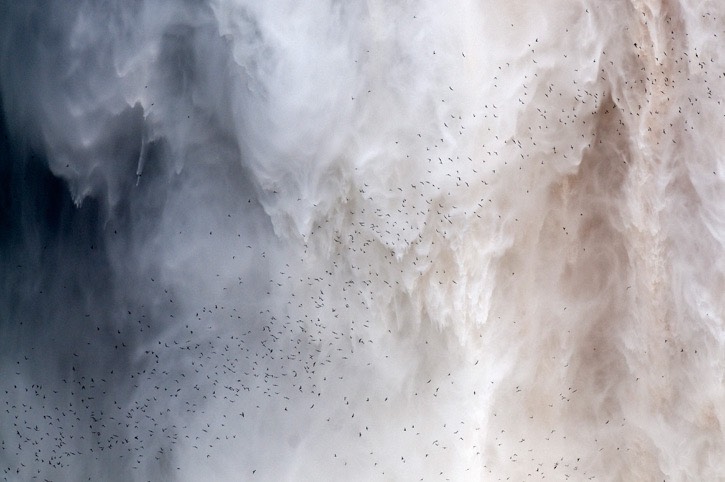
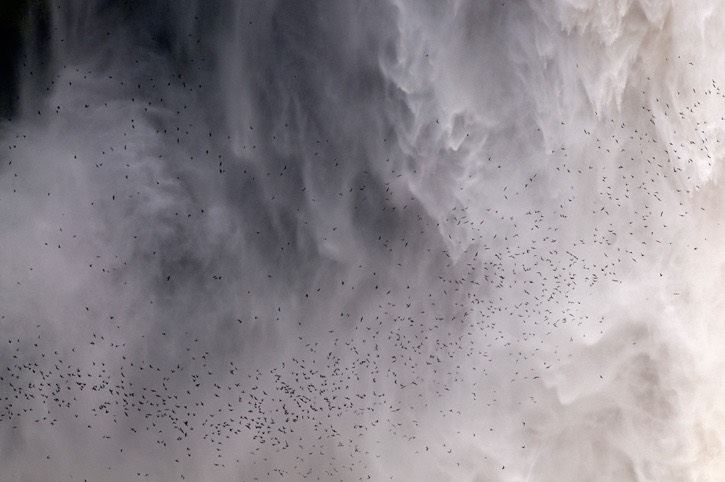
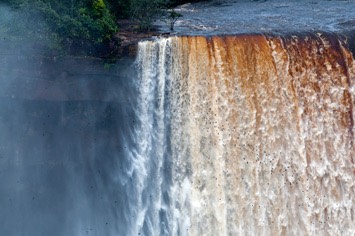
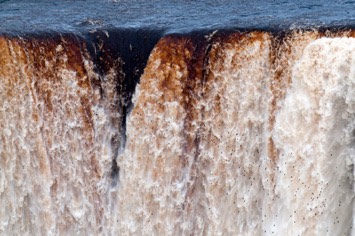
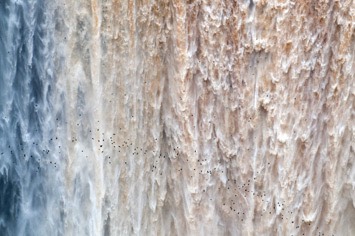
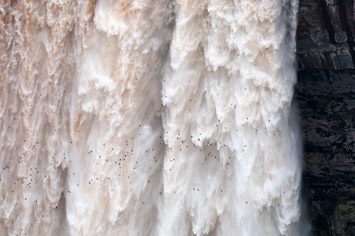
Luke knew exactly where one should stand to pose for photos with the falls perfectly positioned in the background. Note the warning to visitors; we decided that they surely must refer to eight golden frog’s feet!
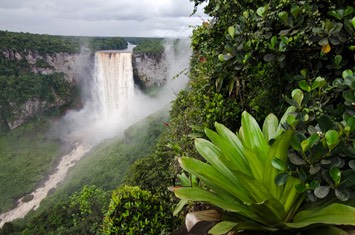
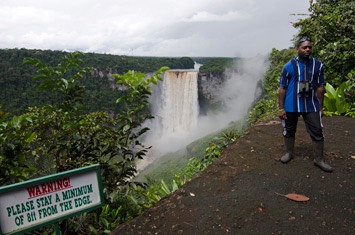
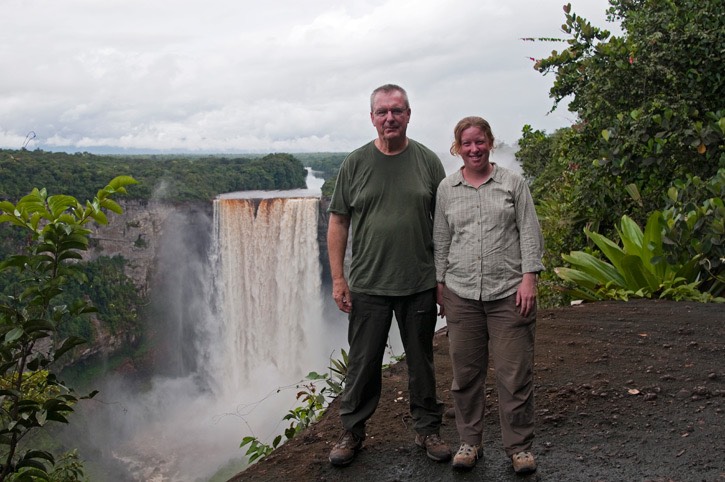
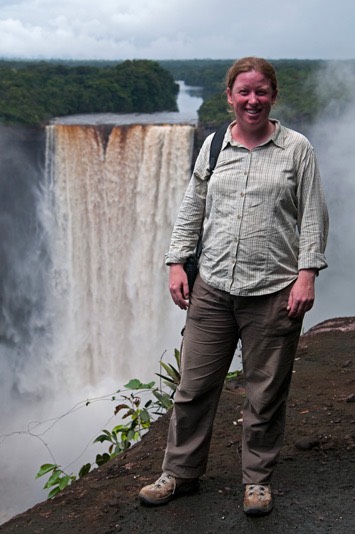
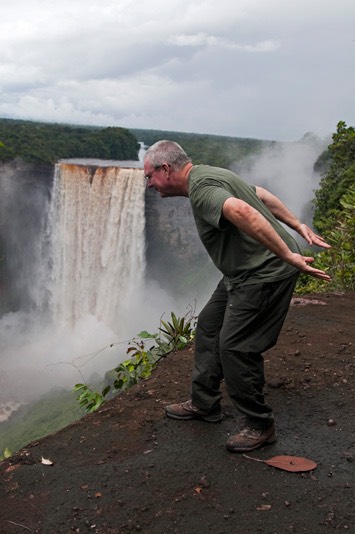
We took sets of photos with the camera in upright, portrait mode, for stitching together to create detailed panoramas. The picture below was made by combining seven shots, and for the technically minded, the original file is 150 cm wide at 300 dpi.
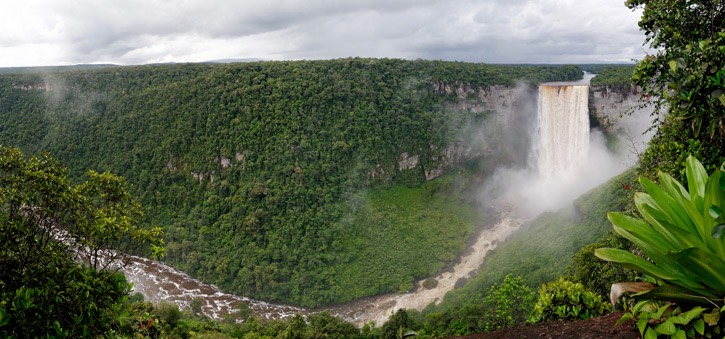
In the meantime, several planeloads of visitors had arrived, with all the aircraft nicely lined up outside the National Park’s visitor centre. The little daughter of a couple working there appeared to be quite intrigued when Luke stuck his head through the window to talk to her.
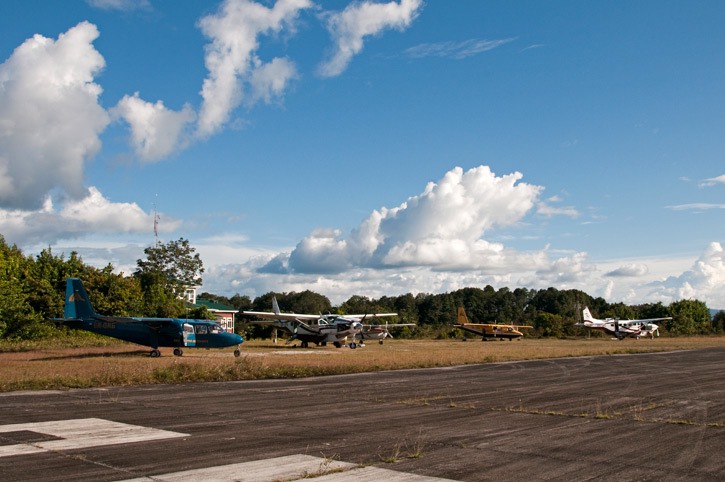
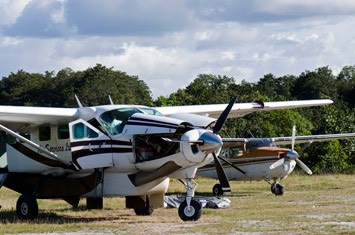
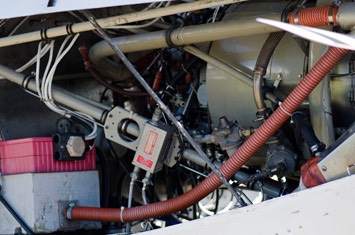
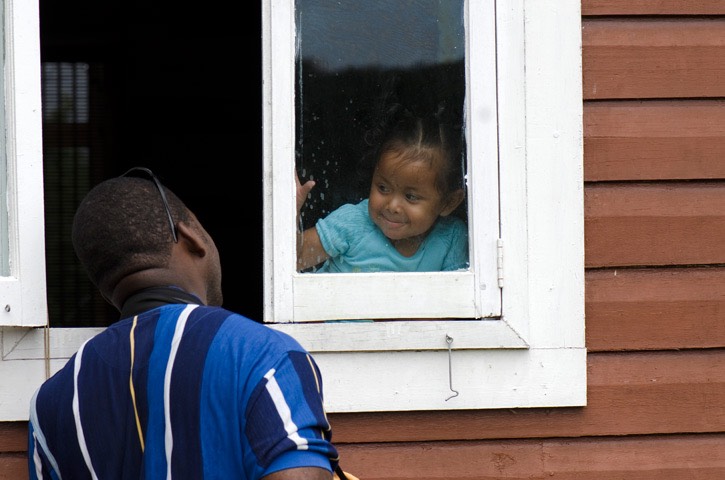
After lunch we set off for another walk, marvelling at all the amazing-looking plants we came across. In among the leaf litter we found a very beautiful little snake. The size of its head is deceptive, as its much bigger body in the background of the photo shows.
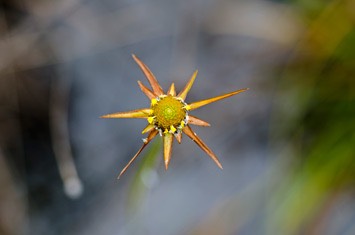
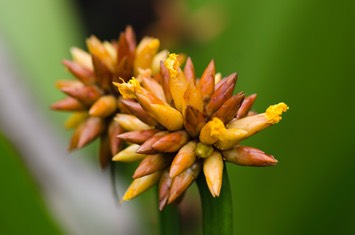
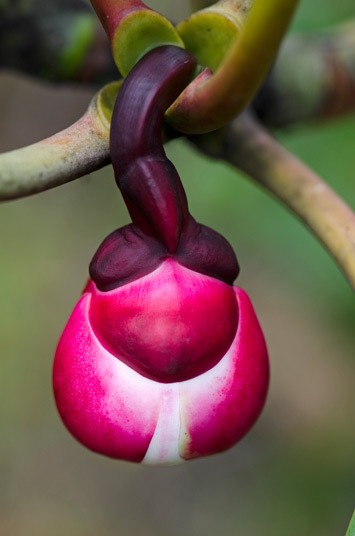
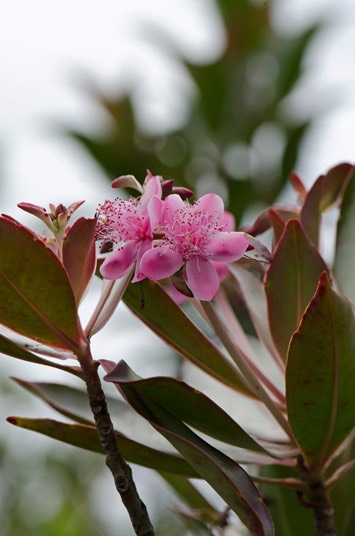
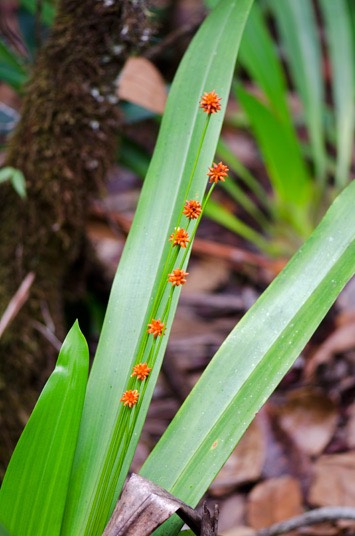
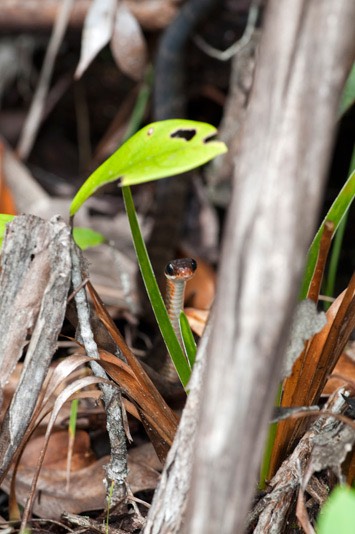
Our main quest that afternoon was to find the golden rocket frog (Anomologlossus beebei), which is found only in the giant tank bromeliads (Brocchinia micrantha) that grow around Kaieteur Falls. Early morning fogs and mist generated by the waterfall condense on the leaves of the bromeliads and run down to collect at the leaf bases. The roughly one-centimetre-long golden frogs live out their lives in these tiny pools of stagnant water. Giant tank bromeliads can grow several metres tall, so we had to limit our search to those that were small enough for us to peer into. We quickly learned that we had to be extremely cautious in our approach, because as soon as one touches a leaf or a shadow crosses it, the timid little frogs dive into cover and do not emerge again for a long time!
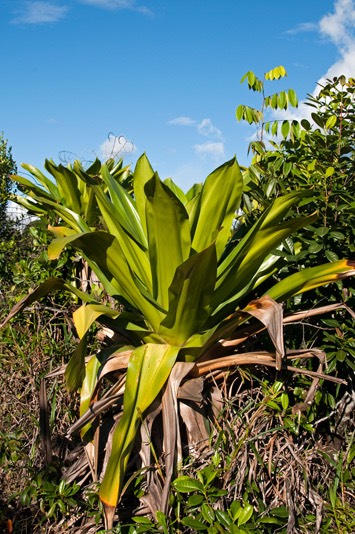
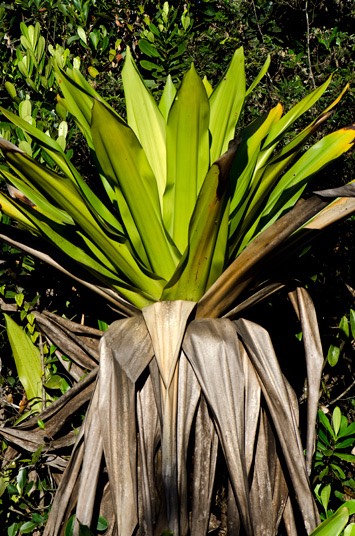
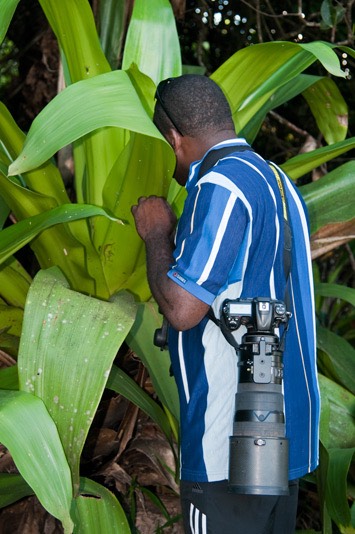
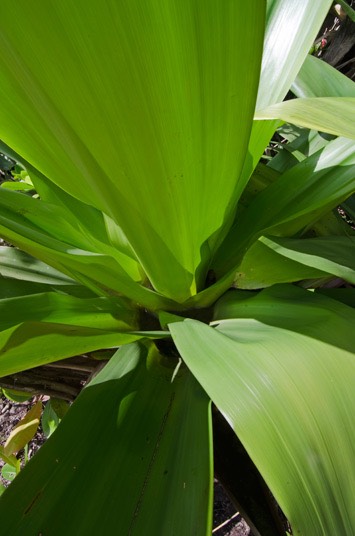
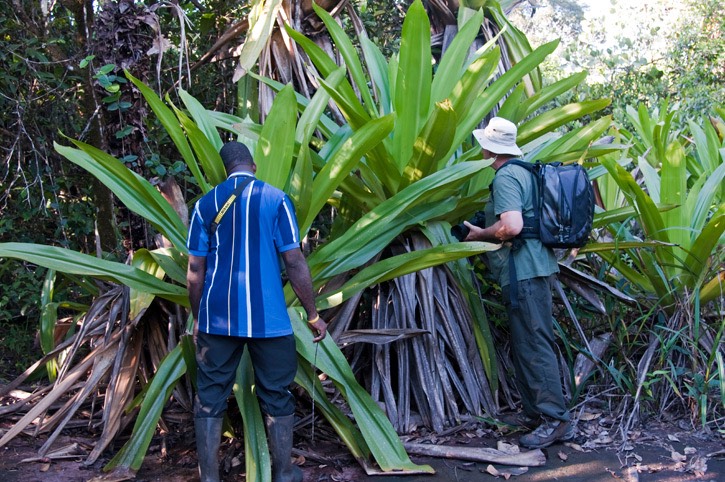
We eventually managed to spot a few golden frogs, some of which were rather pale and not the hoped-for vivid yellow. However, on this first frog foray we found it near impossible to get close enough for a decent photo without disturbing the frogs and sending them hopping for safety.
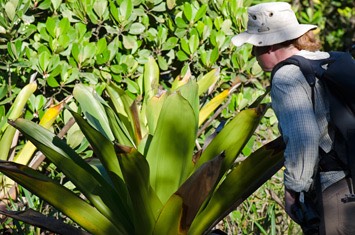
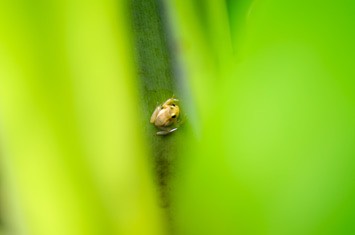
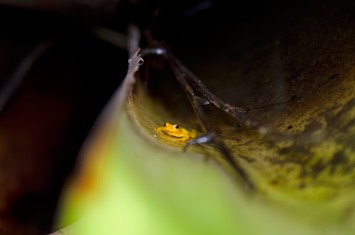
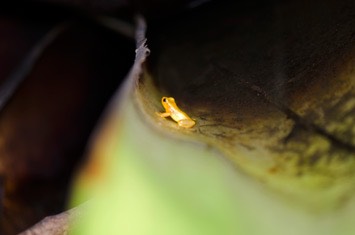
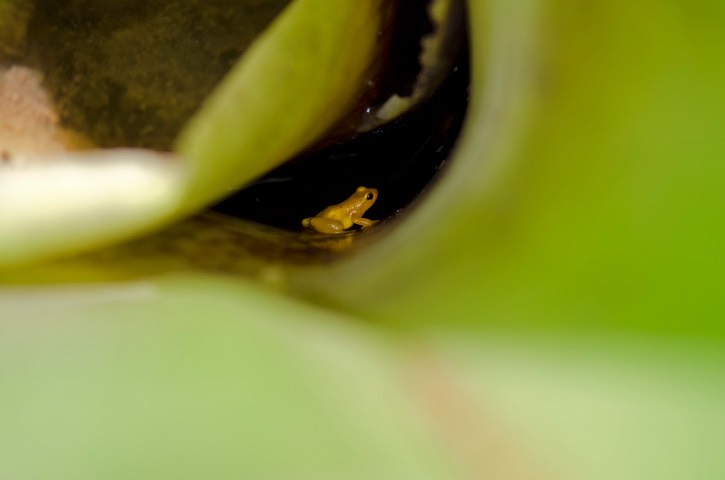
Over the course of his many visits, Luke had perfected the art of fishing for golden frogs. He used a long grass stem to lure the frogs into holding on to it before pulling them out of the bromeliad. After a few failed attempts, he managed to pull a magnificent golden frog out! After being held gently in his cupped hands for a while, the frog settled down and didn’t immediately hop away, when Luke gently placed him on a more accessible bromeliad leaf. We admired the frog’s vivid colour and quickly took a few close-up shots before letting it dive back into its little pond.
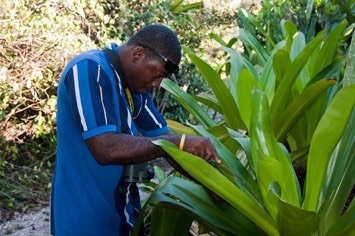
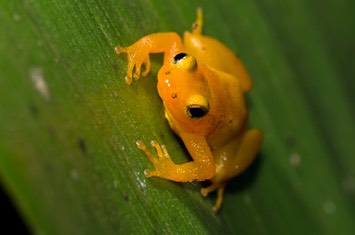
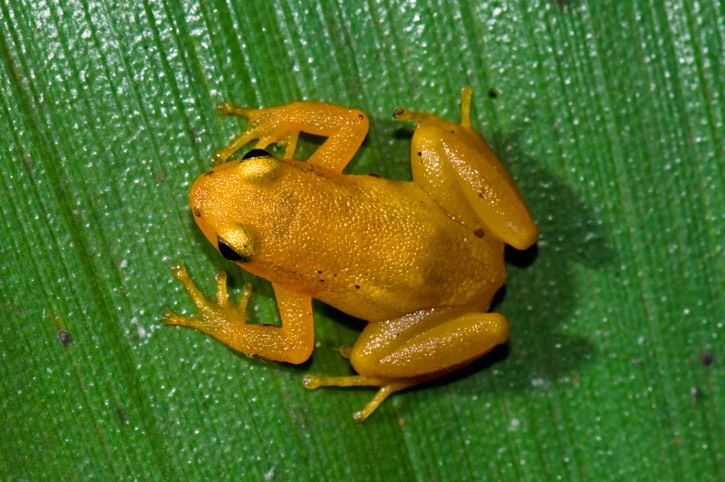
A little later we found another golden frog, although this one was rather pale. Despite initially diving into its little pond, it soon emerged again, and after a while we noticed that it was actually guarding its spawn! In one of the eggs we could clearly see a tiny silver tadpole.
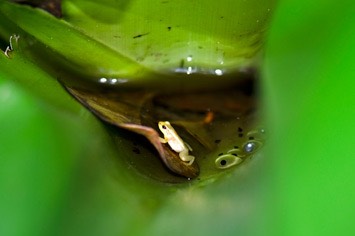
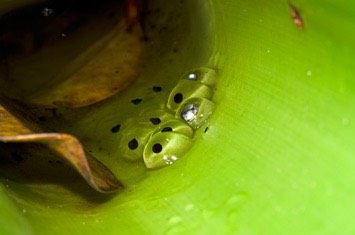
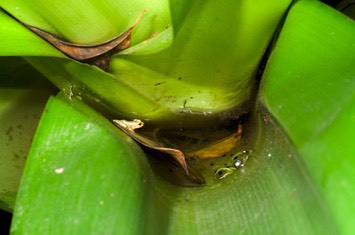
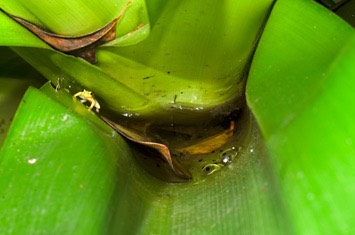
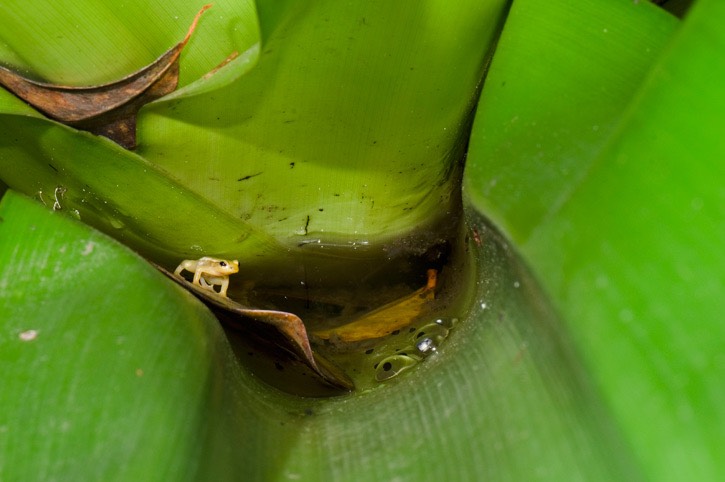
On our way back to the guest house we came across lots more fascinating little beasties, including large numbers of tiny toads, frogs, butterflies and fly-eating spiders.
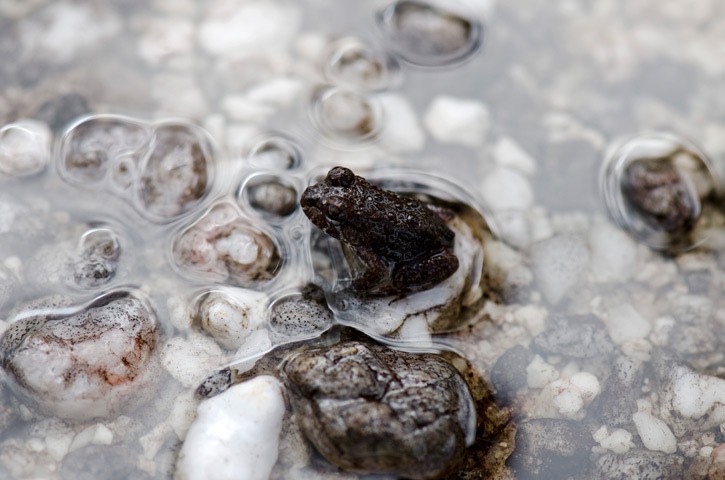
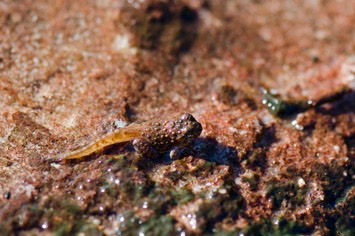
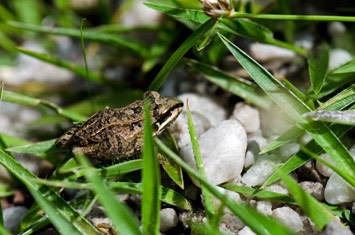
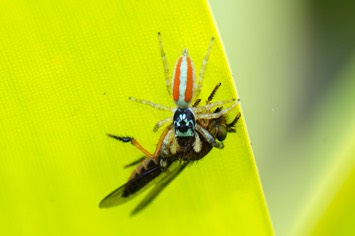
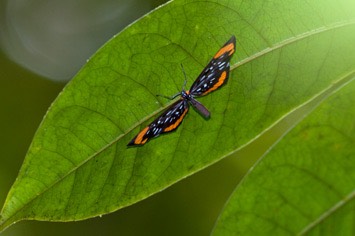
Luke knew his birds well and was able to name pretty much every species we saw. The big turkey vulture was about the only species we could identify without the field guide!
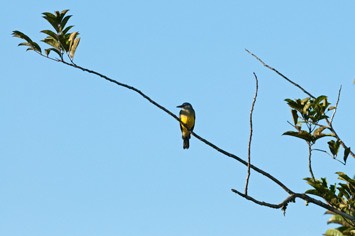
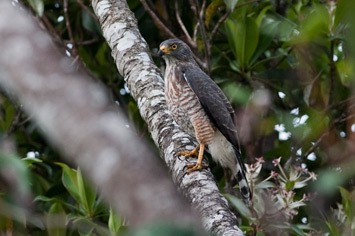
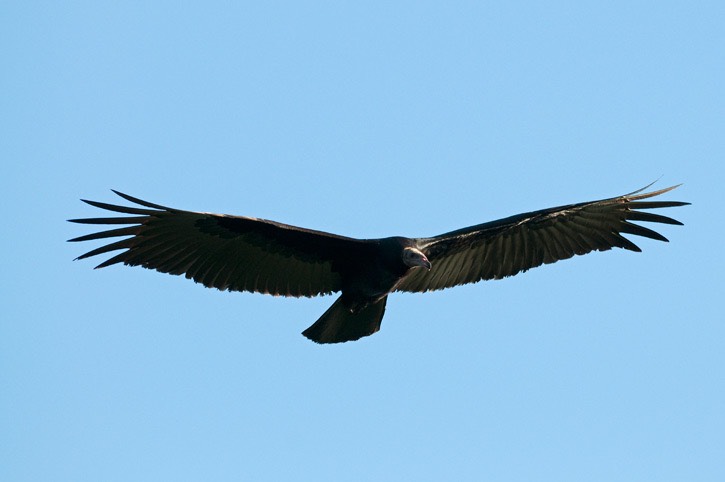
Just before dusk we returned to the top of the waterfall to enjoy the spectacle of the swifts going to roost again. We spent most of our time lying on the rocks, admiring the speed and agility of these birds. Seeing such huge numbers of them flock in the skies and then dash past, to be swallowed up by the waterfall, was an experience not easily described in words or captured by the camera.
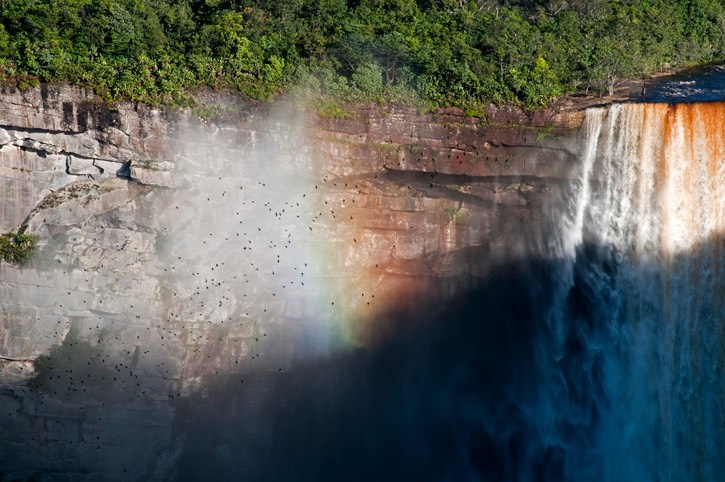
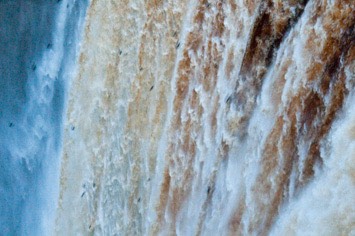
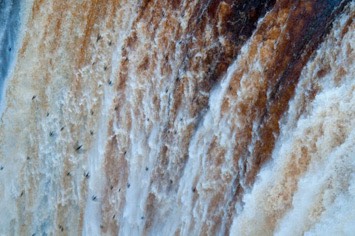
Sunday, 08/07/2012: Kaieteur Falls – Georgetown
Another early morning start held a surprise for us, when not only the gorge was filled with clouds, but we could barely see the other bank of the Potaro River! The fog was very dense and although we could hear the swifts chattering away as they emerged from behind the waterfall, we could see only the small number that flew close past us. There was little point in hanging around, so we returned to the guesthouse and enjoyed a leisurely breakfast.
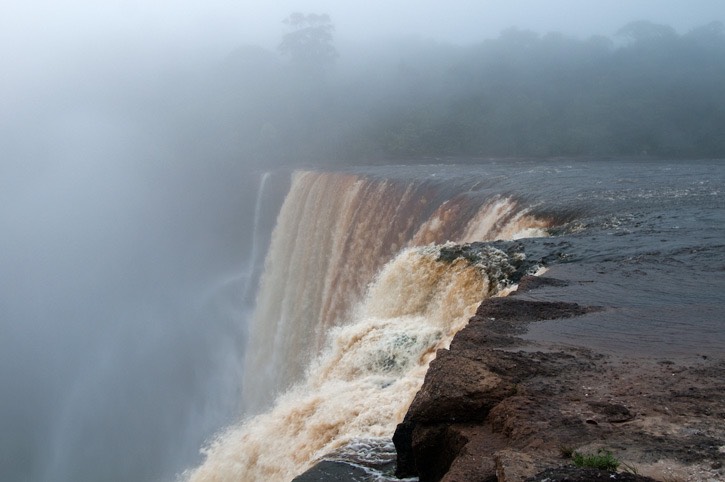
Our second attempt a little later was more successful; the fog had burned off, leaving only a few clouds down in the gorge. The view in the early morning light was spectacular. Luke took us right to the edge where the river drops into the abyss, giving those brave enough to peer over a fantastic view!
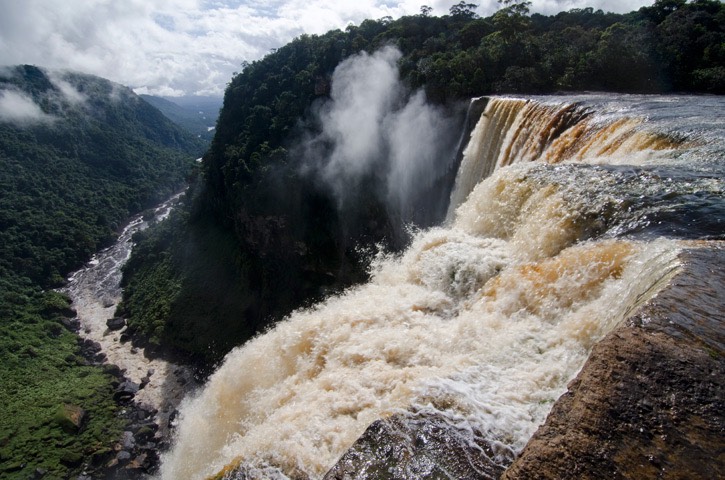
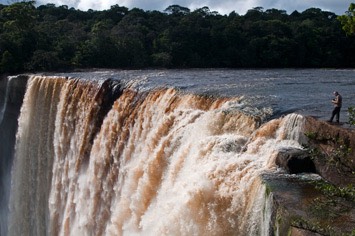
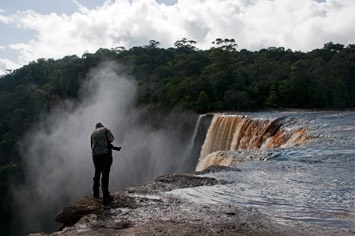
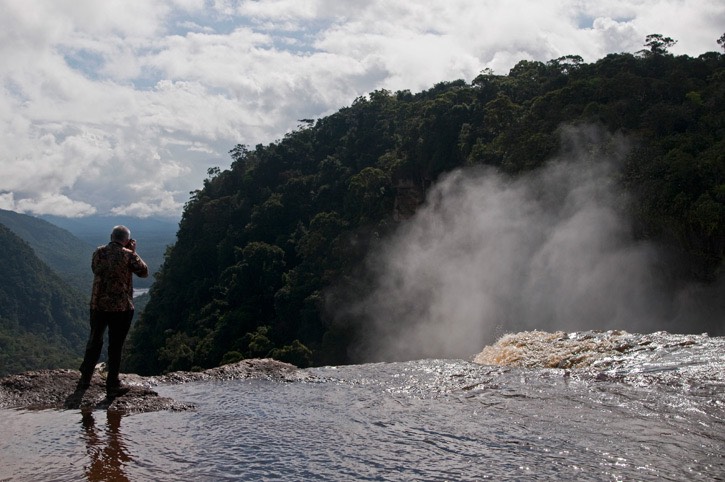
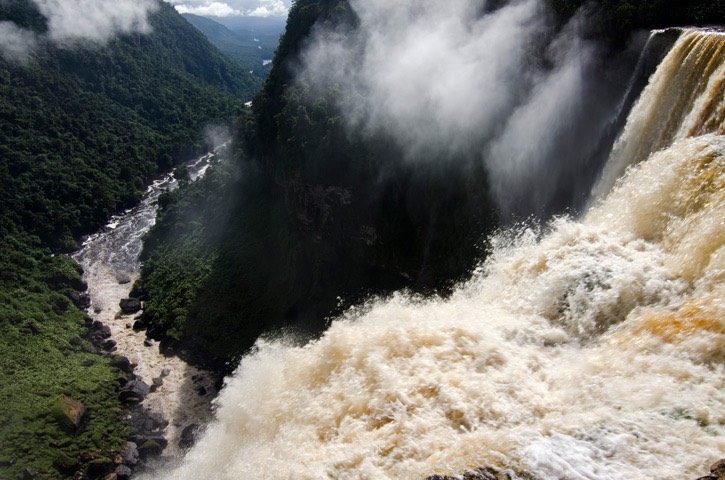
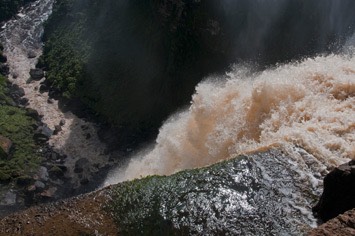
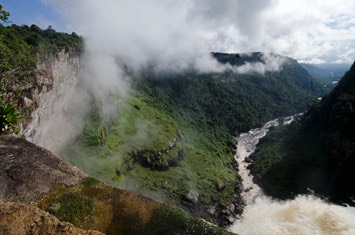
While Luke and Mick happily posed on the edge of the cliff, dwarfed by the mighty waterfall, Maren was a little more reluctant to venture too close to the edge.
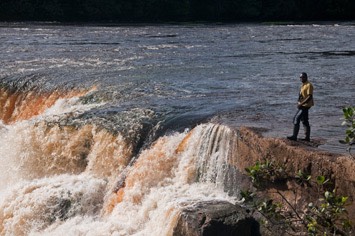
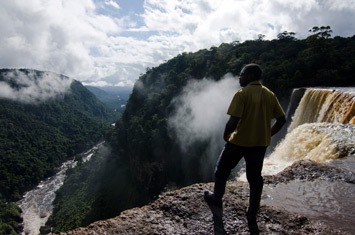
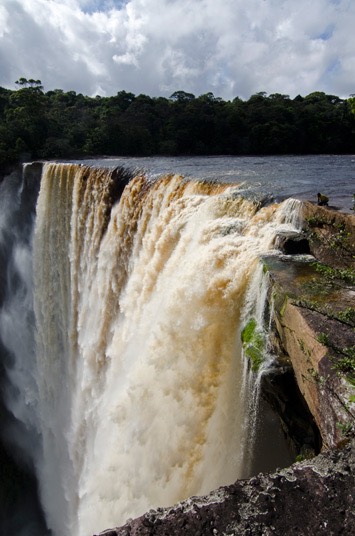
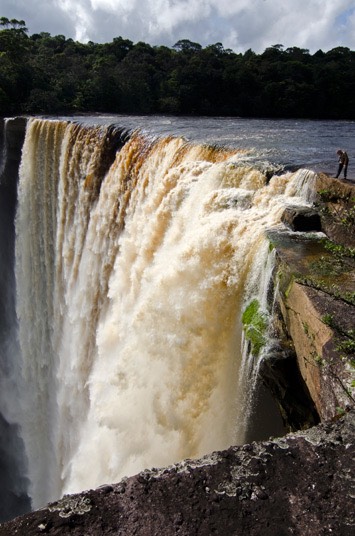
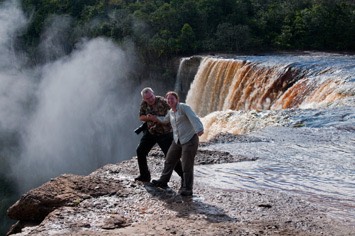
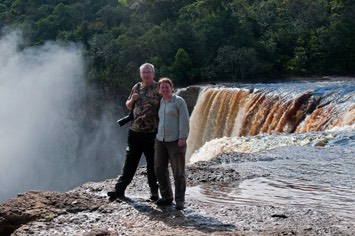
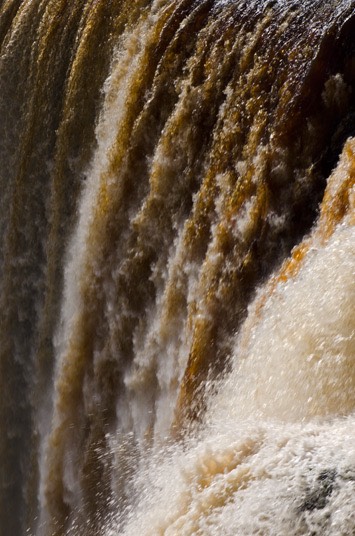
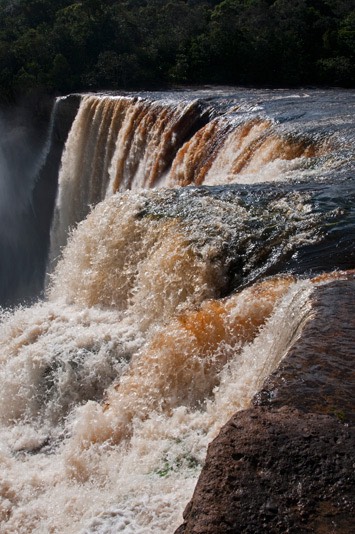
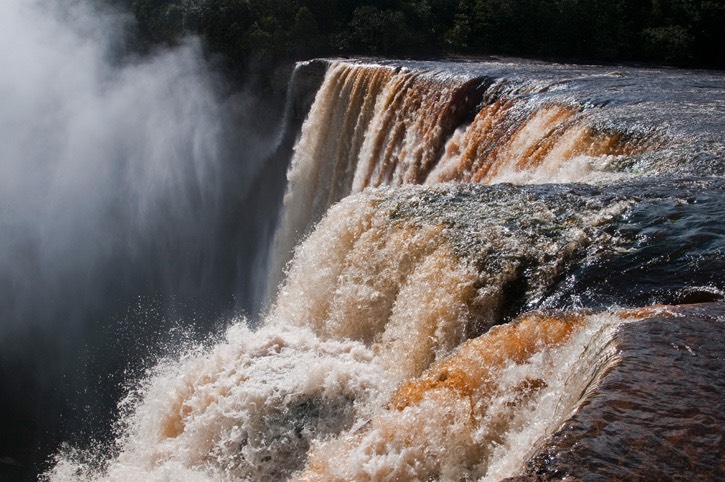
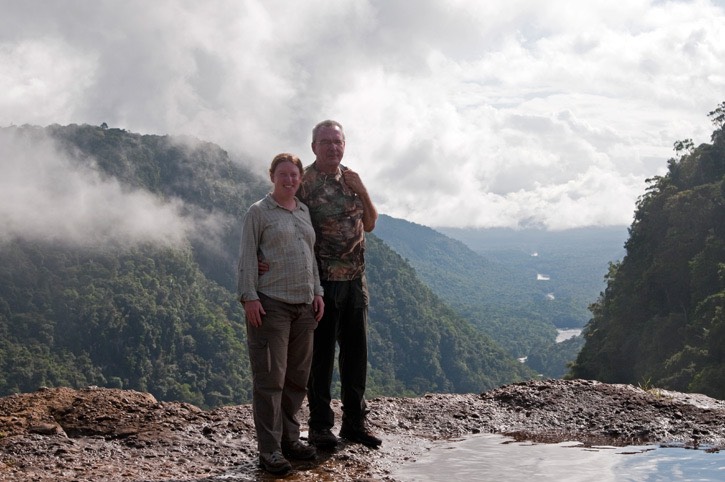
We repeated the obligatory pose on the little cliff overhang and Luke ventured on to the next viewpoint to get as much of the waterfall into the photo as possible. It was another amazing morning spent at Kaieteur and we felt extremely privileged that we didn’t have to share this wonder of nature with anyone else.
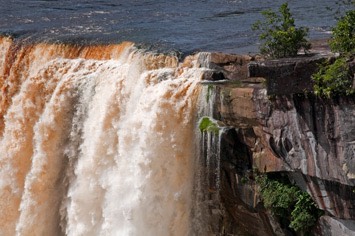
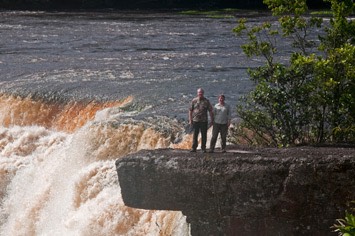
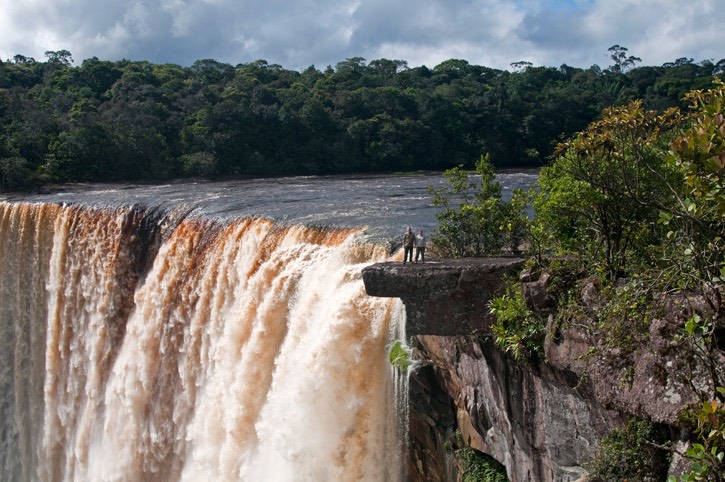
We still had until mid-afternoon before we were scheduled to be picked up, so we decided to head back to Johnson’s View. However, with so many interesting distractions along the way, we made slow progress. Passing some huge tank bromeliads, we obviously had to have a quick look for frogs. We checked out the plant where we had seen the frog guard its spawn, but the little pond was now empty. Apparently golden frogs can move their tadpoles by carrying them around, not just from leaf axil to leaf axil, but even to completely different plants!
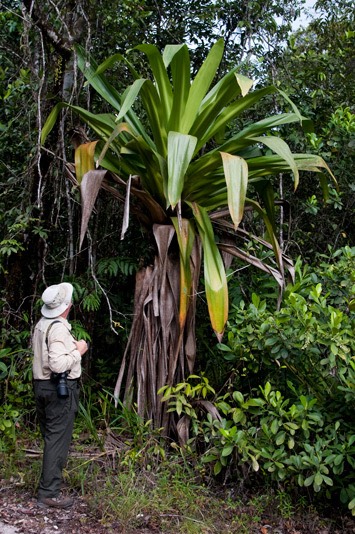
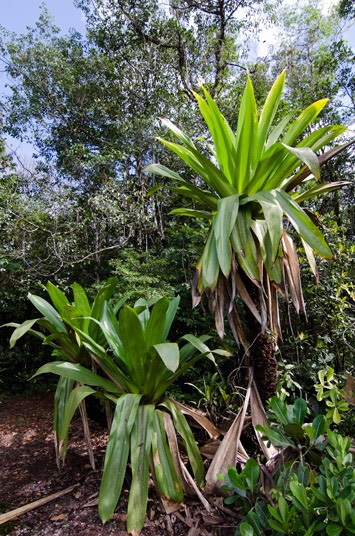
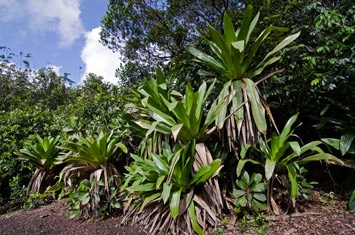
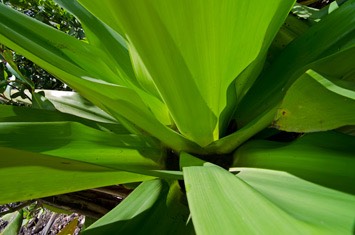
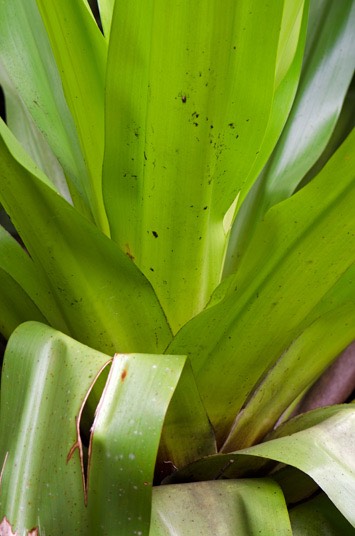
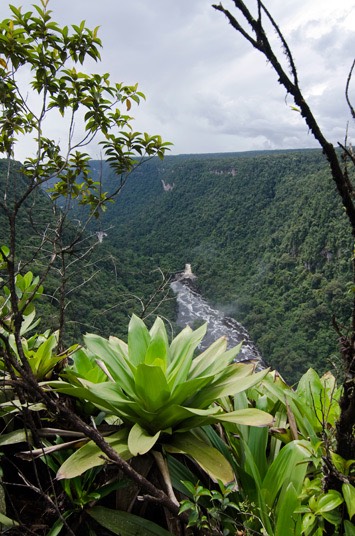
As well as the area directly adjacent to the top of the waterfall, there are three more viewpoints: Rainbow View is the closest, then Boy Scout’s View, with Johnson’s View the furthest away. After a brief stop at Boy Scout’s View, we pressed on through the dense forest.
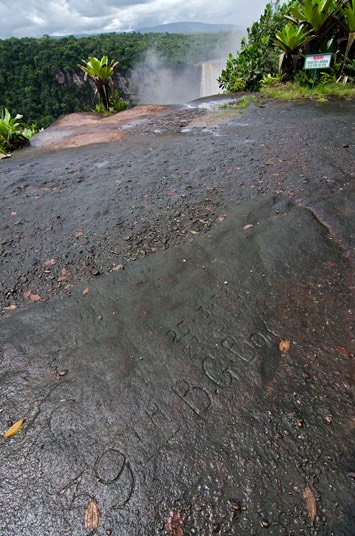
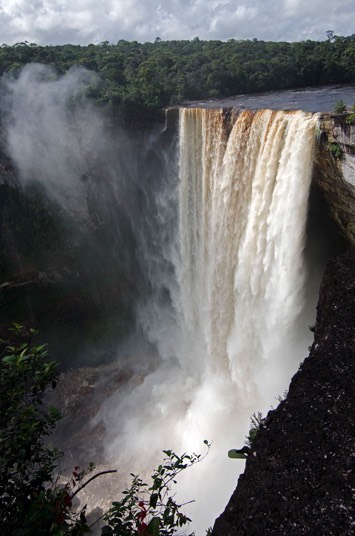
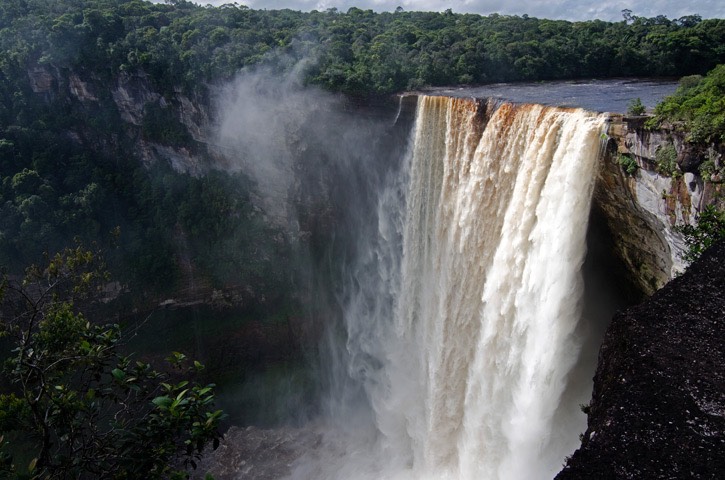
As always, Luke was on the lookout for the elusive Guianan cock-of-the-rock (Rupicola rupicola). Pretty much in the same spot as we had briefly seen one the day before, we saw a beautiful male bird, but this time he stayed in the open for quite a while. Luke, who had already been kind enough to carry our camera with the big telephoto lens for most of our walks, now volunteered as a mobile beanbag. Between us we managed to get some pretty satisfying photos of this stunning looking bird and we were very happy that we now had him in the proverbial bag.
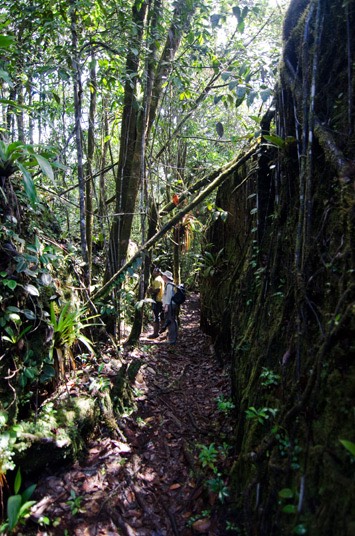
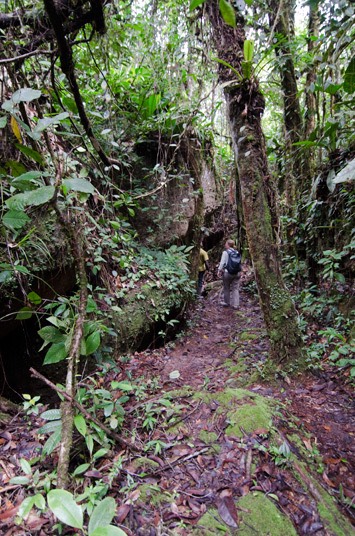
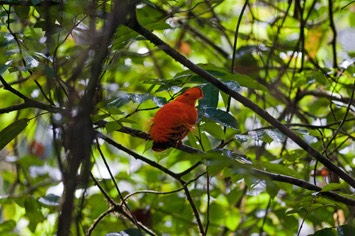
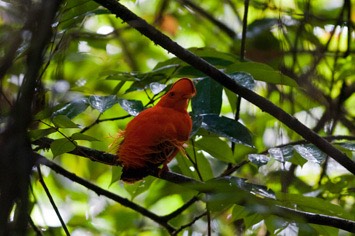
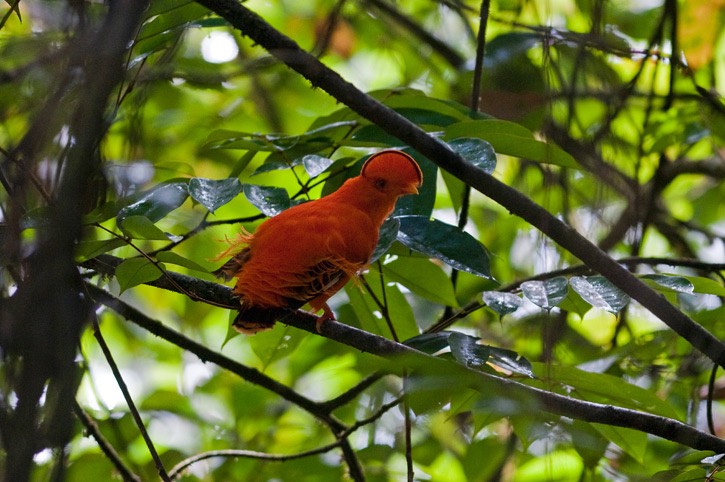
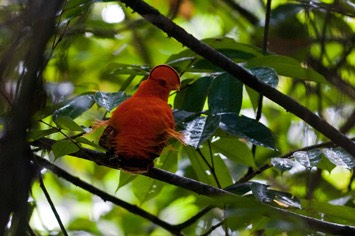
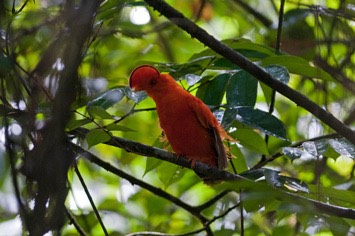
We continued along narrow paths, wending our way past large rocks and tall trees.
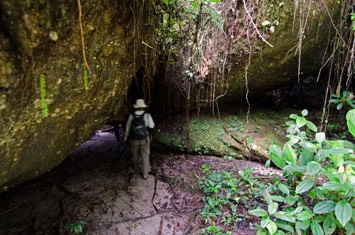
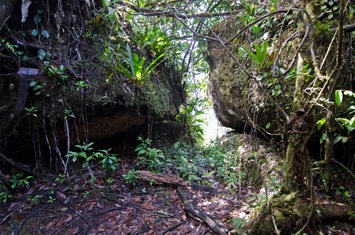
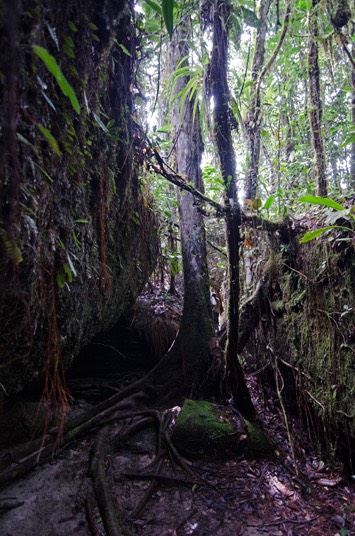
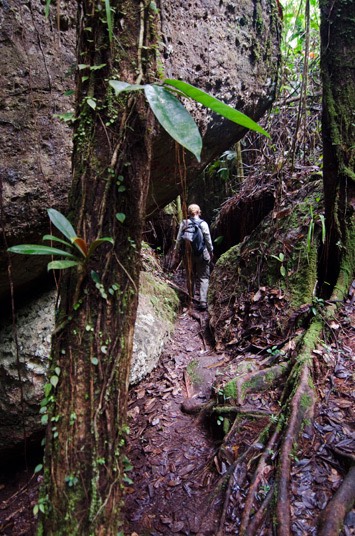
Arriving at Johnson’s View we were able to take more panoramic shots, but this time lit up by sunlight. And of course we had to pose for Luke again!
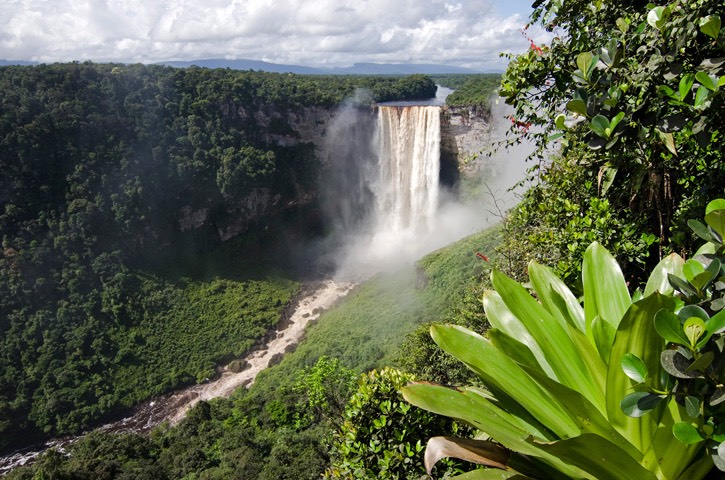
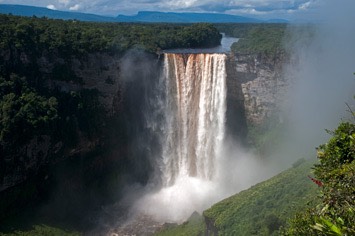
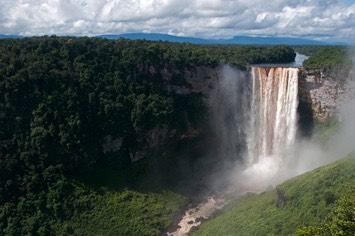
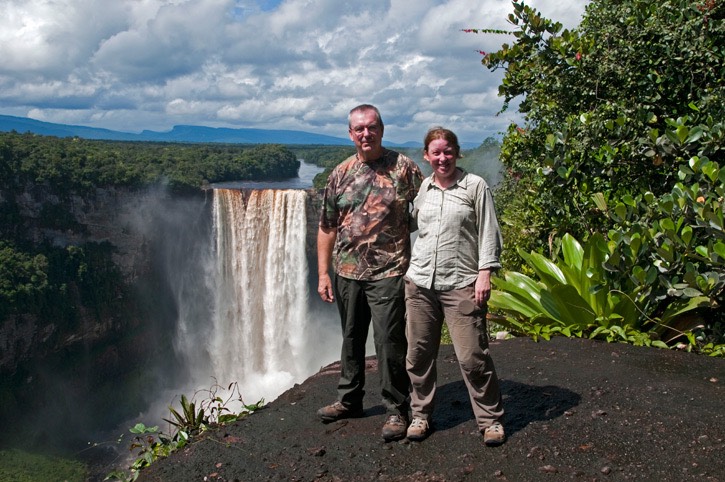
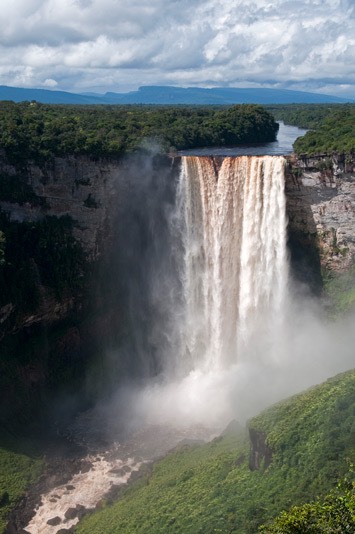
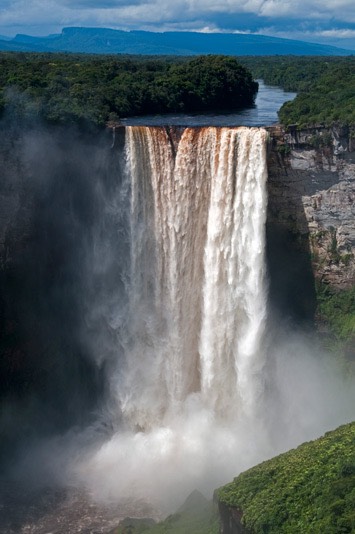
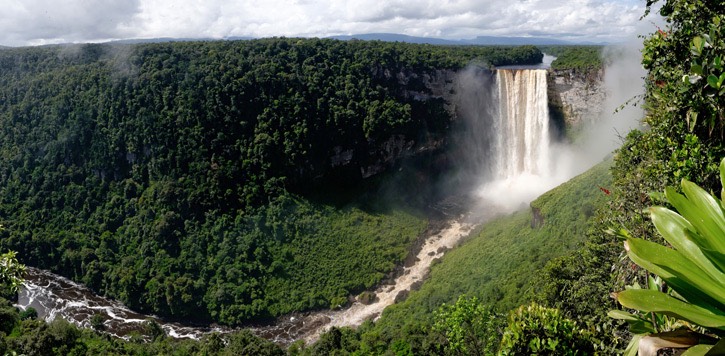
Because of the fog in the early morning, the incoming tourist flights had been delayed, so we went back to the visitor centre to find out when our flight was scheduled. Apparently, it wasn’t due until four o’clock, so, after a quick lunch, Luke suggested that we should head out for yet another walk. We had thought that we would only potter around close to the airstrip, but Luke felt that the one photo that was missing from our Kaieteur collection was of people standing next to the waterfall when seen from a distance. So we found ourselves heading out towards Johnson’s View again, about as far as we could go from the airstrip. While walking we heard aircraft arriving, so we knew that tourists were on their way to the waterfall.
Just around the corner from where we had seen the cock-of-the-rock in the morning, the bird was waiting for us again. The gorgeous male posed totally out in the open, so we managed to get an even better photo of it, showing it’s stunning plumage off to full effect!
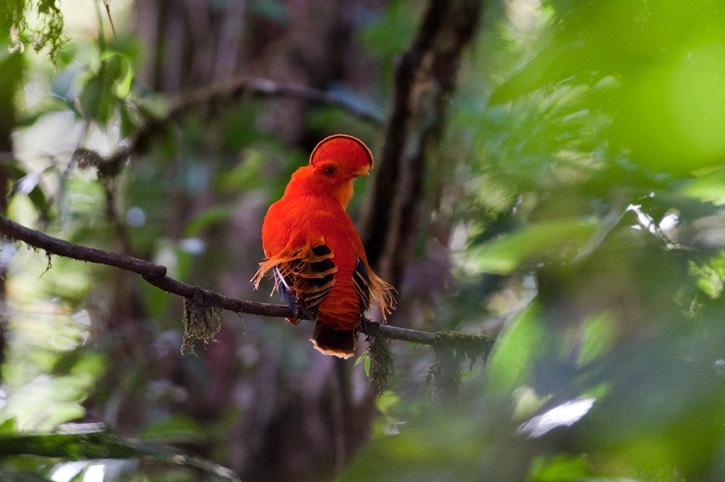
The view of the waterfall from Johnson’s View was spectacular as always and the light was really good. However, we were not able to relax properly as we worried that we would be late getting back to catch our flight. After what seemed an eternity, the first visitors appeared on the overhang next to Kaieteur Falls. We dutifully took some pictures, although one pretty much needs a magnifying glass to spot the people in the photos. Next thing we knew, a plane came up through the gorge, heading towards the airstrip. It didn’t have the logo of the main airlines on it, so we feared that it could be ours.
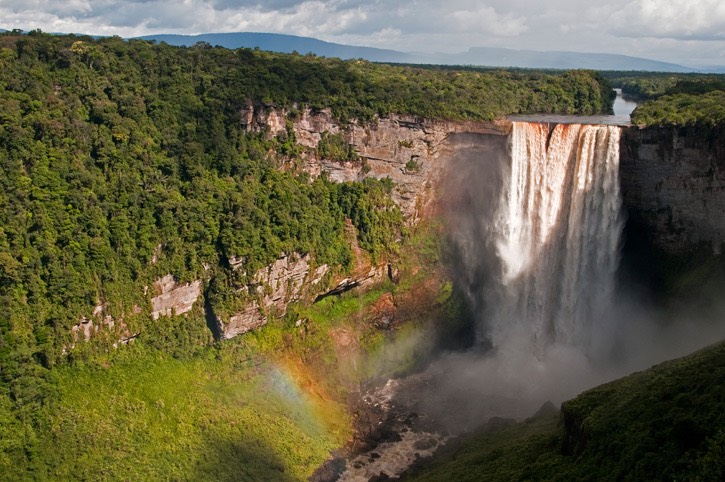
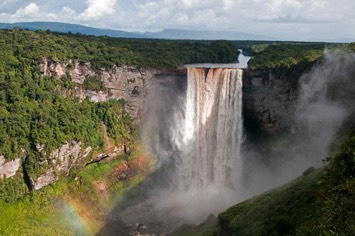
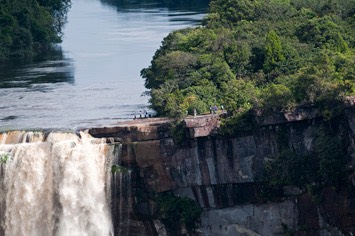
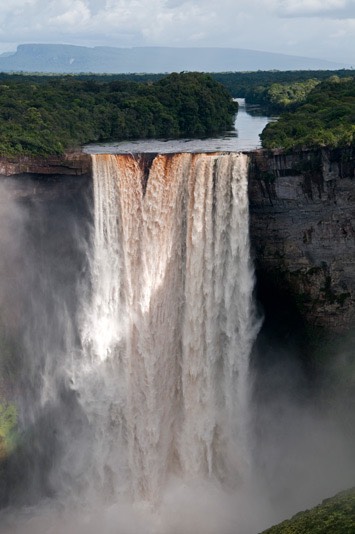
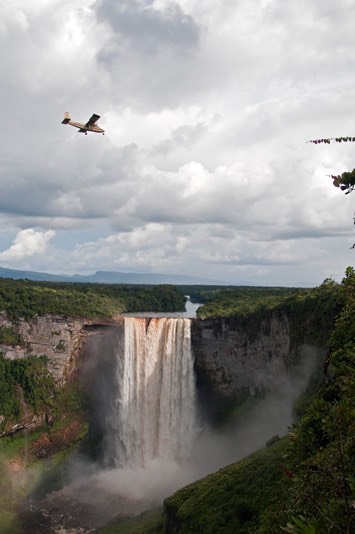
We scrambled back in a mad rush, but, even at a very brisk pace, the walk took us about a quarter of an hour. When we arrived back at the visitor centre, we were told that it had indeed been our plane, which had arrived somewhat ahead of time, and when the pilot found we weren't there he had left straight away for his next destination. Apparently he would pick us up on his last run from one of the nearby mining areas. This time we decided to stay put, as we had no idea when the plane would return. We watched all the other visitors boarding their aircraft to head back to Georgetown, until there were just the three of us along with Bob and some other National Park staff left. Bob tried to raise the airline on the radio but he didn’t manage to find out if and when we would be picked up. By then we were getting a bit worried, wondering how we could change our homeward flight to Trinidad should we get stuck at Kaieteur. After what seemed like a very long wait, we heard the twin engines of a small plane approaching. As soon as the plane pulled up in front of the visitor centre, a clearly unhappy pilot (the same one who had dropped us off two days earlier) told us to throw all our bags into the plane and jump onboard quickly. We took off and, without being able to have a last look at Kaieteur, headed towards Mahdia.
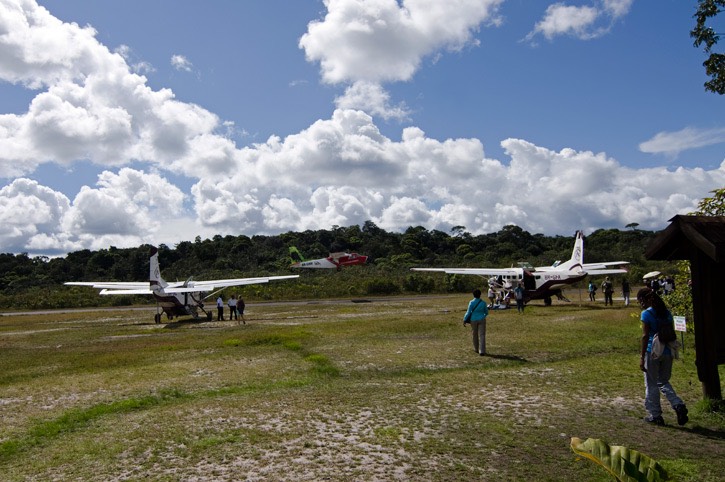
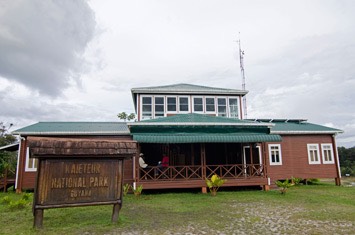
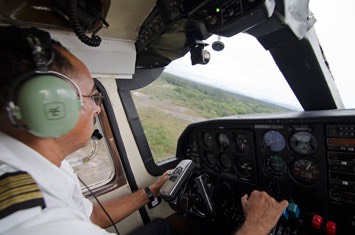
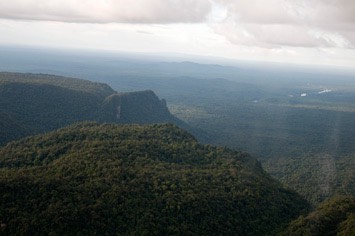
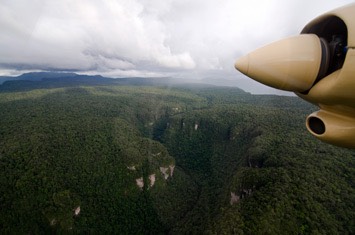
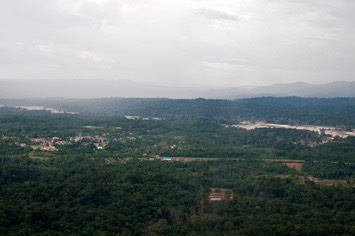
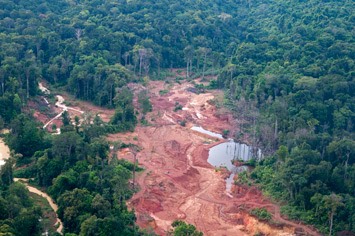
We had hardly touched down at Mahdia, when the pilot pulled off the airstrip and took a short cut at full speed across the grass towards the little hangar. Same procedure there: bags were thrown onboard quickly, passengers were squeezed into the last spaces and we were off again. The pilot was clearly in a rush to get airborne, so he aimed to join the airstrip about half way along its length. We were rather disconcerted to see a woman walking just alongside us, but the pilot simply opened the throttle and we rushed past her. It appeared as if there was nowhere near enough runway left and the pilot managed to get the plane into the air only at the very end of it. He had to climb steeply to clear some trees just outside the little airport and the stall warning alarm buzzed noisily and continuously as the fully loaded plane laboured to gain height. As Mick was back in the co-pilot’s seat again he had a front row view of the struggle to get clear of hills and trees. Maren in the back only saw the red flashing lights and heard the alarms going off, which didn’t exactly help with feeling safe. It got worse when we saw that one fuel gauge was on empty and the other one showed less than 15 percent left! As Ogle Airport does not have runway lights, landings after dark are not permitted. Every few minutes, the pilot took a calculator out and worked out our estimated arrival time. Then a low battery warning came up on the screen of his little hand-held GPS navigator and he started rummaging around in a briefcase looking for replacements. Where did he say the jungle survival kit was kept? Despite flying over beautiful landscapes crowned by circular rainbows, Maren at least could not properly enjoy the flight, worrying that we might not have enough fuel to make it back to Georgetown. We all breathed a great sigh of relief when we saw the lights of the capital ahead and we landed at Ogle just as it was getting dark.
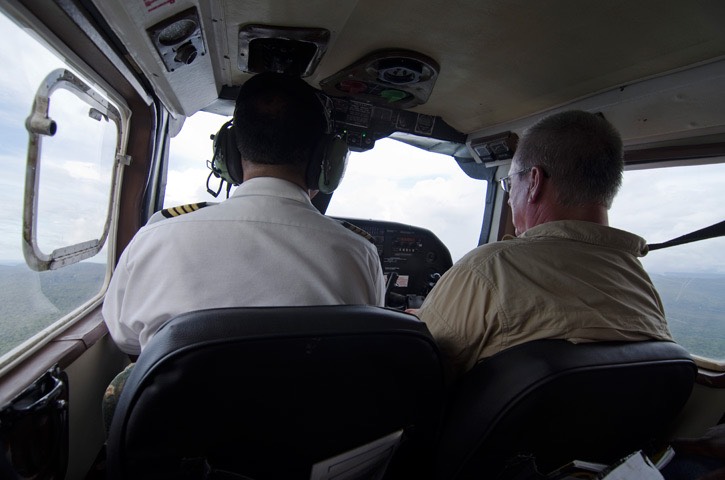
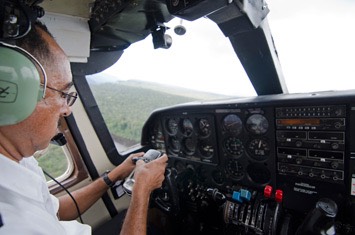
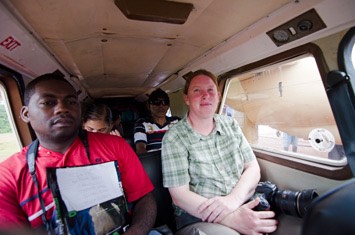
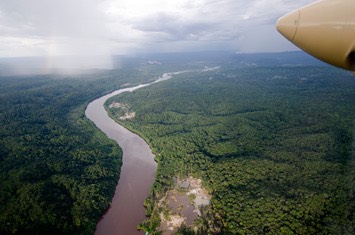
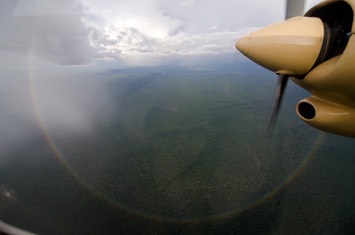
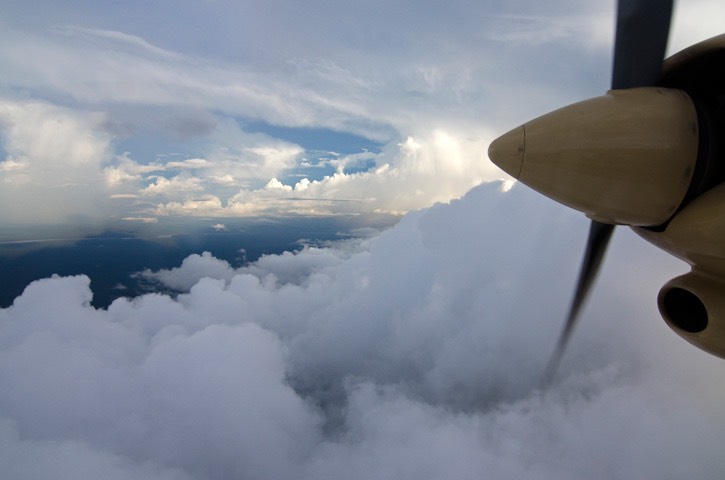
Our last excursion in Guyana had come to an end. We were very pleased to have experienced the wonder of Kaieteur Falls and to have been able to spend most of the time there by ourselves. Although our entire travels had been spectacular, we felt that Kaieteur was certainly one of the highlights. Luke was a very knowledgeable guide; keen to share his knowledge of the wonders to be seen around the waterfall and as a bonus he was always happy to help us carry our camera kit!
Monday, 09/07/2012: Georgetown – Trinidad
On our final morning in Georgetown we were at last able to enjoy a real breakfast in the restaurant. However, it turned out little different from the packed ones we were given before our early departures on previous days! Our lasting impression of Cara Lodge was of a wonderful place to stay, full of character and with history oozing from its wooden walls. The staff were delightfully friendly and helpful.
Punctual as ever, Dennis was there to pick us up. This time we had a longer drive ahead of us, as the international airport is quite a long way out of town. It was a grey and drizzly morning, but we enjoyed our last conversation with Dennis, who had always kept us up to speed with the results of the football World Cup and news in general and had been a great help getting us and all our overweight luggage on board the local flights. Luke had primed us with a choice Guianan epithet for Dennis, so following Luke’s instructions, Mick delivered the accolade in his best Caribbean accent: “Dennis man, yer a reeeel gaffa man!”. We still don’t fully understand what it means, but it had Dennis cracked up with laughter!
Fortunately, luggage wasn’t a problem heading to Trinidad and onwards back to Europe, and we happily added another bottle of finest El Dorado rum to it! We were quite sad to wave Dennis and Guyana goodbye, and we left feeling that we had had a truly amazing time exploring the natural wonders of this little-visited country.
